






Ages 5-11 years old (must have completed Kindergarten)
Cost: $125/resident, $157/non-resident
*Cost is per month
Ages 12-14
Cost: $70/resident, $88/non-resident
*Cost is for entire summer
Ages 14-17
Cost: $25/resident, $30/non-resident
*Cost is for entire summer
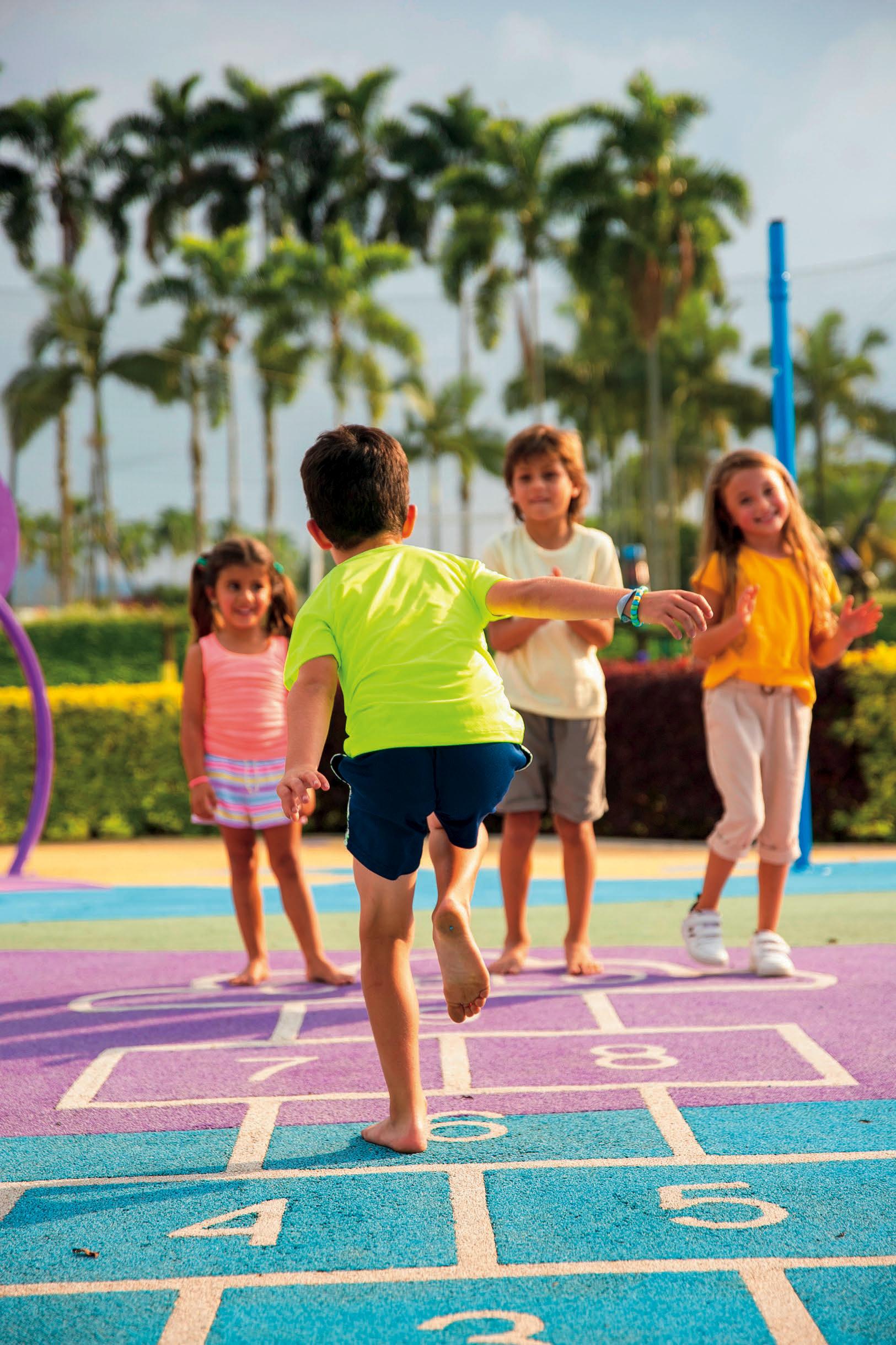


WHY DOES KINDERGARTEN feel like a heartbreaking and exciting milestone rolled into one? Our preschooler (who missed the state cut off by less than a week) is graduating out of his IEP preschool program this spring and moving into kindergarten in August. He’ll be nearly six when he starts kindergarten, and I couldn’t be more grateful for those extra months he was able to spend focusing on his speech, mastering skills, and exploring play-based learning.
If you’re feeling a little overwhelmed with the transition to kindergarten, check out our piece about kindergarten readiness. Or, if you’re not sure if preschool is a good fit for your child, make sure to read all about the benefits from a preschool teacher’s point of view. Plus, find some great monthly subscription kits for your little one and tips for toy rotation.
If you’re well past the kindergarten stage and have found yourself suddenly in the trenches of teen parenting, then I’m excited to share more resources for those middle and high school years. Our articles on setting boundaries, navigating first time employment, and tips for improving your relationship with your teen are all sure to be valuable resources for your family.
On the dad front, we have some great outing ideas for dads and littles, some advice
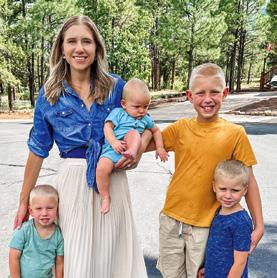 Kate Reed, Publisher
Kate Reed, Publisher
for sharing the mental load at home, making connections with your kids, resources for fathers from Parent Aid, and even some fun jokes to share!
Aside from parenting struggles we can all relate to, let’s take time to enjoy the beautiful springtime to explore Arizona. Make sure to read all about Lowes Ventana Canyon Resort in Tucson—a great staycation idea. Plus, we have Easter basket ideas, springtime reads, spring organization tips, ways to celebrate Passover, and what mom REALLY wants for Mother’s Day! And if your kids love trains like my four boys do, then you’ll appreciate our round up on trains across Arizona. Our personal favorite is the Grand Canyon Railway!
And ready or not…it’s time to think about summer camps! The weather is warming up and teachers are preparing for the final quarter of school. Raising Arizona Kids is chock full of all sorts of camp-related resources online. In this issue you’ll read about the unexpected benefits of overnight camps, and you’ll find a variety of local camps to choose from.
In whatever way your family spends this beautiful spring, Raising Arizona Kids is here to offer resources, fun, and relatable parenting content for moms AND dads.
Do you have a topic you would love us to write about?
Email publisher@rakmagazine.com
Tucson • Catalina Foothills • Marana Oro Valley • and the Surrounding Areas
SPRING 2024: MARCH • APRIL • MAY
VOL 1: NO 2
PUBLISHER
Kate Reed
EDITOR
Monique Seleen
CONTRIBUTORS
Scarlett Bendixen • Amy Davis • Bethany Eggleson
Joan Fawcett • Dr. Gayle Galligan • Rachel Galvez
Lindsay Hansen • Angela Judd • Nikki Kontz
Melissa Leon • Danielle Lerner • Stephanie Lyons
Denise Matus • Jennifer Mawcinitt • Alayna McNeal
Dr. Tien Nguyen • Rachel Rubenstein
Chris Seleen • Thomas Silva
Ori Tsameret • Scott Vanderpool
Aqua Tots Swim Schools Pima County Libraries
ART DIRECTOR
Michèlle-Renée Adams
COVER PHOTOGRAPHY
Melissa Fritzsche Photography
MARKETING CONSULTANTS
Tina Gerami-Bynum • Shari Greene • Lauren Jones
Raising Arizona Kids magazine
(ISSN 1051-4295) was created to connect Valley families to local resources and share real-life stories about the challenges and joys of raising children. Copyright © 2023 by Raising Arizona Kids , Inc. All rights reserved. Reproduction in whole or part without written permission is prohibited. Content guidelines are available at raisingarizonakids.com
@RAKmagazine on Twitter; RaisingArizonaKids on Facebook, Instagram and Linkedin; RAKmagazine Pinterest and Youtube.
CONTACT US
editorial@RAKmagazine.com familytime@RAKmagazine.com advertising@RAKmagazine.com subscriptions@RAKmagazine.com
932 South Hunters Run, Show Low, AZ 85901 480–991–KIDS (5437) • raisingarizonakids.com

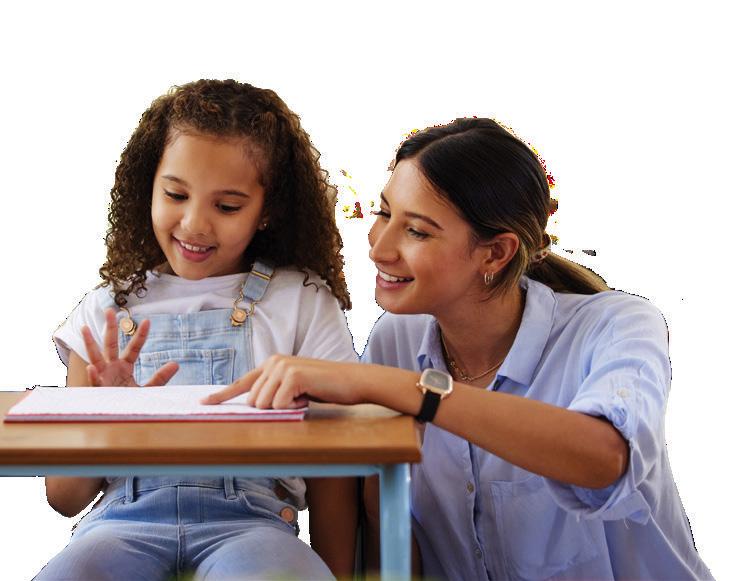




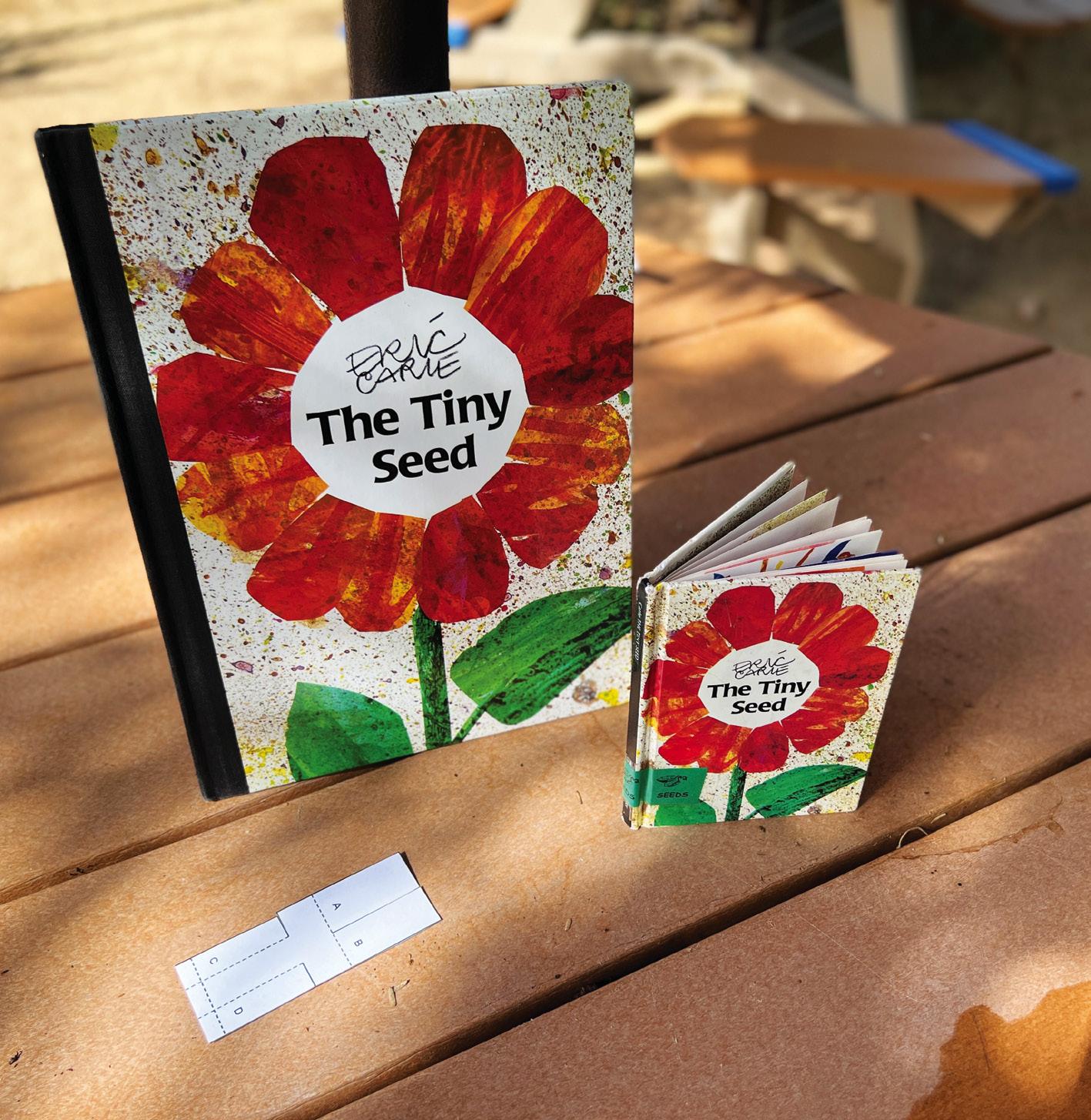
Mouse’s First Spring by Lauren Thompson


Goodbye Winter, Hello Spring by Kenard Pak
In a simple, cheerful conversation with nature, a young boy observes how the season changes from winter to spring.
Worm Weather by Jean Taft
Join in the rainy-day fun, as kids splash through the puddles, affecting another weather enthusiast, a nearby worm. An imaginative and playful story, readers will love seeing the worm delight in the weather just as much as the kids.
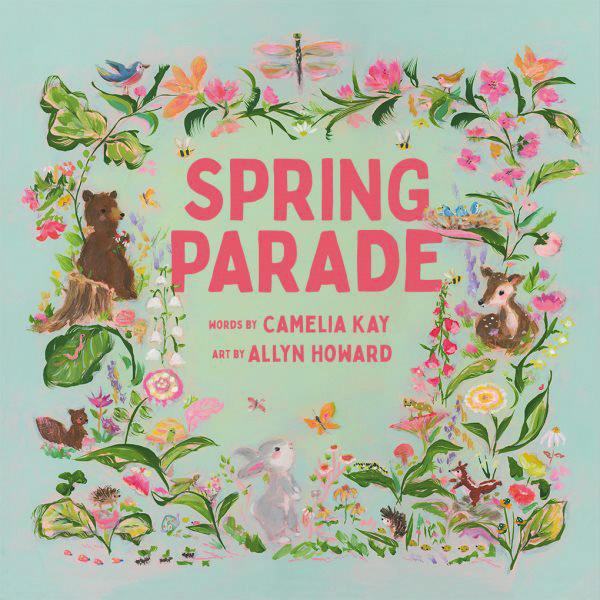

Finding Spring by Carin Berger
A mouse and its mother experience the delights of nature on a windy spring day. This seasonal story is perfect for even the youngest of readers.
The Tiny Seed by Eric Carle
A classic story of the life cycle of a flower is told through the adventures of a tiny seed. Everyone will cheer for the seed’s progress as it floats across the sky, nestles in the ground, and finally grows into the giant flower it was always meant to be.
This gloriously illustrated book celebrates friendship, curiosity, discovery, and the meaning and beauty of two seasons—winter and spring.
Spring Parade by Camelia Kay
Follow along with Mama and Baby Bunny as they lead a festive parade of their friends through the blossoming flowers and trees, rejoicing at the coming of spring.
















BOOK PICKS FOR MOMS

IF YOU STRIVE to be a great mother, but struggle with caring for yourself without neglecting your kids’ needs, are feeling overwhelmed by guilt, or succumbing under the pressure to be perfect, then this book is for you! Dr. Morgan—a psychotherapist and relationship expert— offers a proven step-by-step plan that any mom can follow, walking you through important things such as:
• Ridding yourself of mom-guilt for good
• Identifying your needs and expressing them with confidence
• Creating a self-care plan that goes beyond pedicures and bubble baths
I completely devoured this book, and felt like Dr. Morgan wrote it just for me. If you are ready to discover how to flourish as a mother, know exactly how to care for yourself in ways that actually make a difference, and finally feel joy in motherhood, then you’ve got to read Love Your Kids Without Losing Yourself!
BOOK PICKS FOR DADS
IF YOU HAVEN’T heard of David Goggins, you’re in for a real treat as you discover this man’s incredible transformation from being depressed and overweight to becoming a U.S. Armed Forces icon and one of the world’s top endurance athletes.
In Can’t Hurt Me , David shares his astonishing life story and reveals that most of us tap into only 40% of our capabilities. His story illuminates a path that anyone can follow to push past pain, demolish fear, and reach their full potential.
This book made me realize that the biggest obstacle standing in my way during challenging circumstances is my own mind. David provides strategies and ways that we can strengthen our mind to give more when we feel like we have nothing left to give.
Whether you’ve encountered a difficult season of work, find yourself struggling in fatherhood, or just need a little motivation—this is the book for you!
BOOK PICKS FOR MOMS
Review by Monique Seleen

WRITTEN BY ARIZONA mom, Melissa Leon, Efficiency Bitch is for is any woman who feels like she just can’t seem to get it all done. Using the five pillars of the B.I.T.C.H. method — which stands for Bank, Inbox, Time, Connection, Harmony — Melissa walks you through tangible steps on how you can have it all without settling for less, fearing burnout, or worrying about what tomorrow will bring.

Melissa is a relatable author and delivers her message in a straight-forward manner that is easy to digest and follow. I found myself jotting down notes and wanting to implement everything she wrote about. If you’re ready to conquer life, motherhood, and a career, without feeling burnout, this book is for you!
Get an inside look at some of Melissa’s helpful tips in her article, Put Spring Cleaning On Autopilot found in this issue of the magazine!
BOOK PICKS FOR DADS
Review by Chris Seleen

GETTING A GOOD night’s rest can affect how you show up at work, as a dad, a husband, your happiness, mental and physical health, and more.
In his book Sleep Smarter, Shawn Stevenson shares easy tips and tricks to discover the best sleep and health of your life. And who doesn’t want that as a busy dad?
This book really opened my eyes to how much of our life is impacted by sleep. It helped me focus my attention on small changes that could make a big difference on the quality of my sleep such as the temperature of the room, limiting screen time before bed, and being mindful of the foods I was consuming. Our kids have solid bedtime routines, we should too!
If you’re ready to sleep better, feel refreshed, and achieve a healthier, happier life, then Sleep Smarter is a book you won’t want to miss!
Congregation A nshei Israel’s Pre school Summer Camp



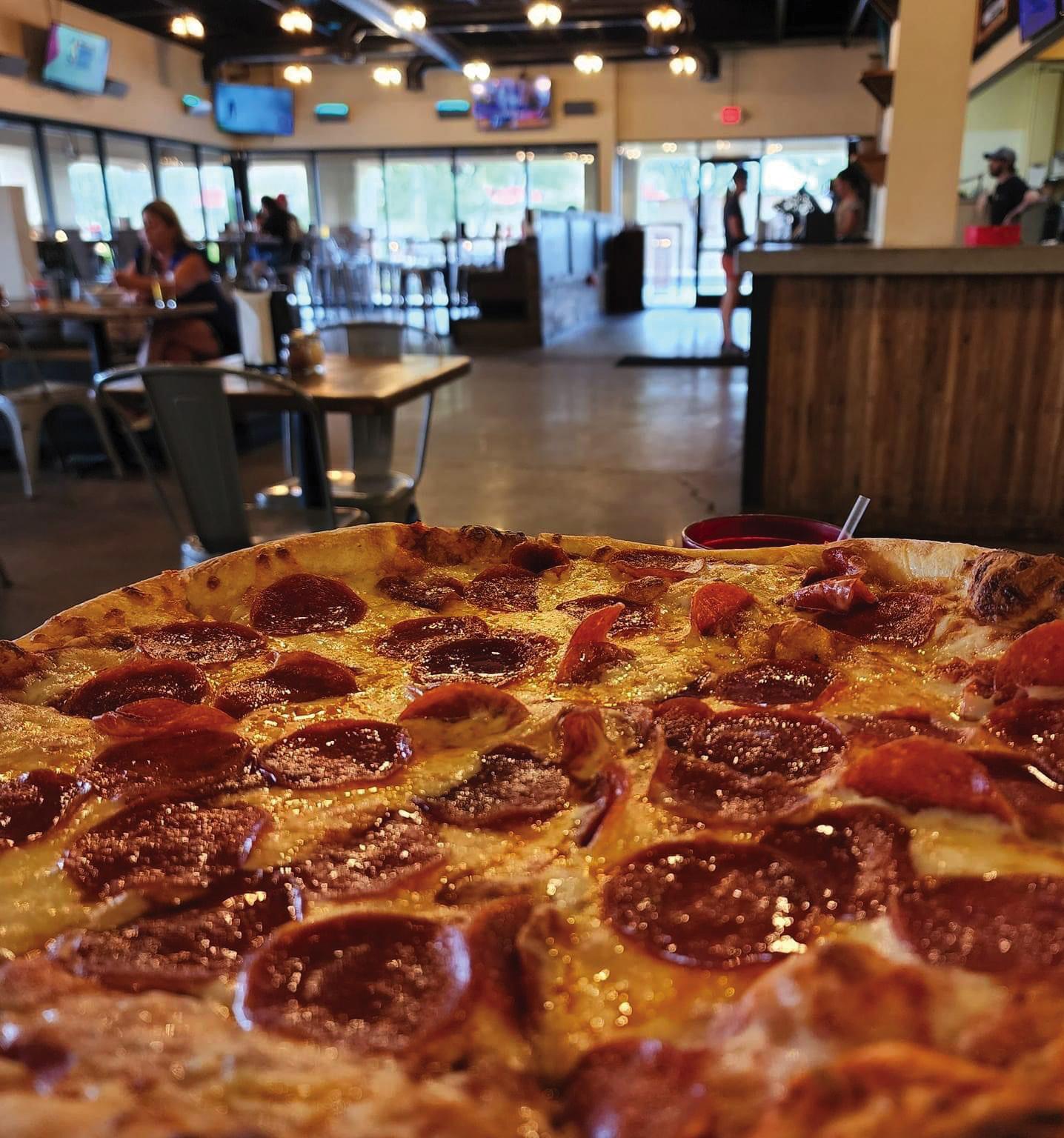

area and started discovering all the toys and making friends with the other kids. This allowed us the chance to order in peace and actually hold some adult conversation with our friends.
When the food came, he sat and ate with us, then returned back to the kids’ area— playing for another 35-40 minutes with little to no assistance from us, while we took our time enjoying the rest of our meal.
IF YOU LOVE PIZZA, have young kids, and haven’t checked out Bear Canyon Pizza yet, you must add this to your list of places to dine at!
On a recent trip to Tucson with my husband and son, I was in search of a familyfriendly restaurant we could go to and meet up with some friends. Pizza seems to be the universal gathering food, and my son loves it (as do we), so it seemed like a good choice.
But, the cherry on top and the thing that makes this place an absolute hidden gem, is the fact that it has a kids’ corner with all kinds of books and toys to keep little ones occupied. As soon as I found out about that, I was sold! And let me tell you, it was a game changer for dining out with a toddler.
My son, who was 21 month old at the time, can get a bit squirmy and restless when we go out to eat. In the time it takes to stand in line, order, and wait for the food, he’s usually over it and we’re trying to scarf down our meals as quickly as possible because he’s ready to go.
In this case though, as soon as we got situated, he happily went over to the play
My husband and I couldn’t stop ranting and raving on how incredible of an experience we had—all because of that little play area. I’m on a hunt to find more places like that (although I’ve yet to find any quite like it).
In addition to the wonderful kids’ area, Bear Canyon Pizza offers an extensive menu with options that everyone will love. You’ll find everything from garlic knots, to wings, salads, pastas, and of course, pizzas. There are also 30 beers on tap and 10 different kinds of wines.
Inside boasts a lively atmosphere with plenty of TVs for game day viewing, and opens up to a large outdoor patio to enjoy some fresh air on a nice day.
If we lived closer, Bear Canyon Pizza would be a place we would become regulars at. Whether you live in Tucson, or are visiting the area, be sure to check out this place for great food and one of the best family-friendly dining experiences!





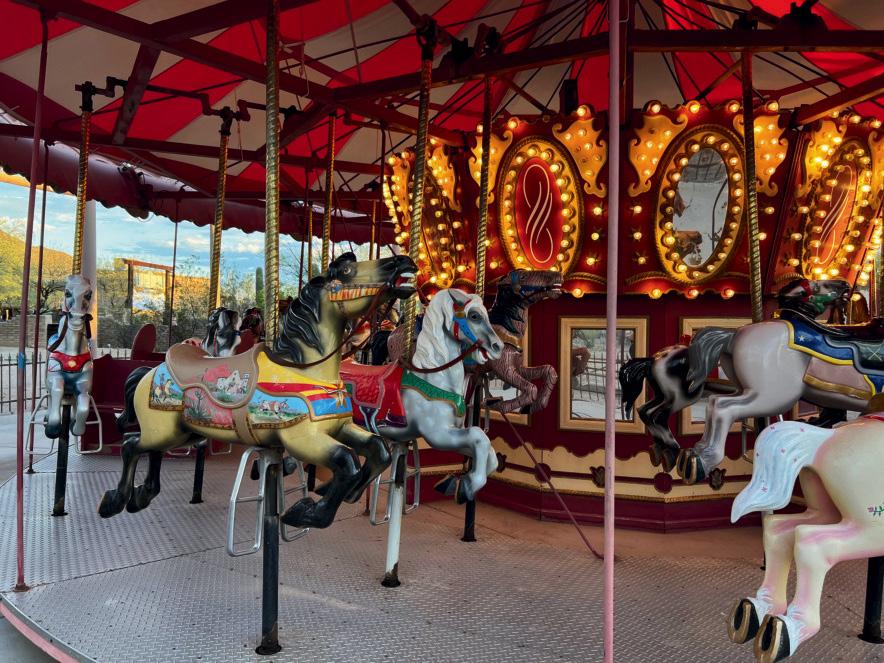


GET READY for a day of imaginative play, discovery, and learning at the Children’s Museum Tucson.
My husband, son, and I took a trip to Tucson for the weekend this past fall, and I knew we had to plan a stop at the Children’s Museum. It happened to be rainy and cold that day, so an indoor place with many hands-on activities was a perfect way to keep my son active after our carride from the Valley.
I’m not sure if it was the lively and bright colors, cheerful atmosphere, or the anticipation of all there was to do—but my son, lit up as soon as we walked through the doors.
With over 17,000 square feet of space, 10 indoor exhibits, and an outdoor courtyard filled with exploration for little ones, kids ages 10 and younger will be enthralled at all there is to discover.
• BODYOLOGY: Little ones can learn about their body, how to make healthy choices, and the joy of growing, shopping for, and cooking food! Hit the orchard and Flores Mercado before testing chef skills in the cocina.
• CURIOSITY COURTYARD: Bang on the drums and pound on the xylophones to fill the courtyard with beautiful music. Or take a moment for reflection and remembrance.
• ELECTRICITY: Learn all about energy, electrical circuits, solar, generators and a Jacob’s Ladder.
• GRAVITY: Discover how what goes up, must come down. Move the magnetic pieces on the Ball Wall to create a track for the ball to follow, or line up the leaves on the Caterpillar Thriller to send the metal bead caterpillars down the path.
• IMAGINE IT: The paint pod encourages visitors to paint on the wall – be prepared to get messy in the best way! The BUILD area has elements of construction, architecture and engineering. In the MAKE space, imaginations will soar with recycled materials, tools and maker guides.
• INVESTIGATION STATION: A hands-on STEM experience, this exhibit is full of science activities that make noise and move!
The Children’s Museum Oro Valley (CMOV) at Tohono Chul has indoor and outdoor exhibits, daily activities, and programming for kids and families with a focus on the culture, animals and plants of the Sonoran Desert region.
Bring your stroller or wagon to use as you explore the gardens along the way. Open from 9 a.m. to 1 p.m. Tuesday-Sunday, with open activity areas and scheduled programs every day.
Visitors will experience Tohono Chul and CMOV exhibits and programs for one entry fee. All ages are welcome. Kids five and under get in free year-round!
Watch balls and scarves fly through Airways, wonder at the Bernoulli Blower, or challenge friends to a test of balance.
• PET VET: Always a favorite, this exhibit lets kids “take care” of the pets, from X-rays to baths.
• PUBLIC SAFETY: Experience the life of public safety in the firehouse, explore a fire engine, police motorcycle and ambulance!
• SENSE OF PLACE: Take a tour around Tucson, from Sabino Canyon to Sentinel Peak, with stops at Colossal Cave and Kitt Peak along the way. Scale the heights of Sabino, discover creatures in the cave, and view the heavens in the Kitt Peak telescope. Explore the inside of a saguaro, then top it off with a photo op in front of “A” Mountain – all in one room!
• WEE WORLD: For those five and younger, the newly expanded Wee World offers tactile and make-believe opportunities. Take care of the babies, try on a costume, play musical flowers, climb and explore, or sit quietly in the reading corner.
• WHISTLE STOP: Train enthusiasts will love the trains above and around, and one big one to climb through, complete with a bell to ring and horn to sound.
In addition, the Children’s Museum Tucson offers a variety of weekly programs and special events to engage visitors and their families including free admission on Thursday evenings, an inclusion program for families and children with special needs, and more.
My son had a blast exploring and playing at the Children’s Museum Tucson, and my husband and I loved watching his curiosity and imagination come to life.
For more information, visit childrensmuseumtucson.org
 CHRIS SELEEN
CHRIS SELEEN
Ingredients
• White cake mix
• 4 colors of Easter color food coloring
• 1/2 cup butter, softened
• 8 ounces cream cheese, softened
• 1 teaspoon vanilla
• 1 lb powdered sugar
• 1/3 cup butter
• 2 1/2 cups mini marshmallows
• 3 1/2 cups chow mein noodles
• Jelly beans
Instructions
1. In a small saucepan melt butter. Add marshmallows, and stir continually until all melted. Add in the chow mein noodles and stir.

2. In a small muffin tin that has been lightly greased with butter, make little birds’ nests.
3. Place in freezer for 30 minutes. Then take out and pop out with a knife. Top with jelly beans.
4. Make a box of white cake mix according to the directions on back, and then take about a cup of the mix and put it in a bowl and do that in 4 bowls.
5. Add drops of the food coloring you want to use and mix it.
6. Take one color and using a cookie dough scoop add the first color, then the second color, followed by the third color. Then top with the final color.
7. Take a knife and lightly swirl each cupcake making sure not to mix too much.
8. Bake in the oven for 19-22 minutes (same as the cupcake info on the back of the white cake mix).
9. Let cupcakes cool and then top with frosting.
10. Add the birds' nest with Gimbal's Jelly Beans inside of them.
11. You can make a little bird face using food coloring, or paint a little decoration on some of the Gimbal jelly beans to look more like bird eggs. Slice in half or dig in and enjoy!
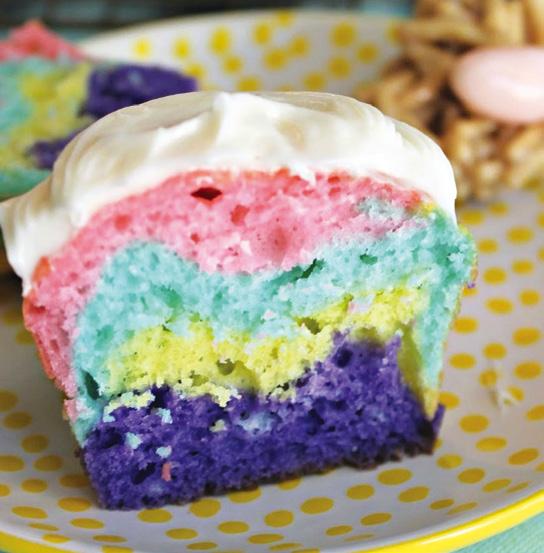

Ingredients
• 6 cups Chex Mix Cereal
• 6 cups Golden Graham Cereal
• 2 3/4 cups sweetened shredded coconut, dye with green food coloring before adding
• 2 cups sliced almonds
• 3/4 cup butter
• 1 1/4 cups light corn syrup
• 1 cup sugar
• 1 1/2 teaspoon coconut extract
Toppings
• 1 cup mini marshmallows
• 1 cup pastel M&M’s
• Spring sprinkles
Instructions
1. In a large bowl, mix together the Chex cereal, golden grahams, green coconut, and almonds.
2. In a medium saucepan, melt butter and stir in corn syrup and sugar.
3. Bring to a boil for two minutes. Then remove from heat and add the coconut extract.
4. Pour the mixture over the Chex mix mixture and mix well.
5. Stir for a couple of minutes making sure that all the cereal is coated!
6. Add the toppings. Then enjoy.
THIS YEAR EASTER is on Sunday, March 31st. One thing I’ve found to do that makes gift baskets easier, is to have “go-to” categories and then just get a new size or item in that category each year. Some people do this for Christmas gifts as well. It’s the “something you want, something you need, something to wear, and something to read.”
Here are some examples of what I’m doing with my 2-year-old son:
Want (Toys/Play/Sweet Treat)
It’s always fun for kids to get at least one new thing to play with in their Easter basket. I usually do one bathtime toy and one other playtime toy.
Bath Toy: We got this fun Glo Pals Sammy Character to add to his bath time toys. Simply place the cube into the back of the Pal and watch it light up as it drops into the water!
Play: For regular playtime, we got him this Magnet Tiles set. I liked that these ones from Connetix are made from non-toxic, BPA and Phthalate free plastic.
Need (Clothes/Shoes)
Around Easter time the weather starts to change. It’s a good time to get your kids some new summer clothes or shoes they might be in need of. I always like to do summer pajamas as part of the Easter basket.
We got the Organic Cotton Short Sleeve Pajama Set from City Threads. It comes in a variety of vibrant colors, has a nice weight, a soft feel, and a good amount of stretch!
Wear (Special shirt/outfit, swimsuit, accessory)
Summer is just around the corner, which means we’ll soon be spending many days at the splashpad. I like to add a new swimsuit and water shoes to my son’s basket so he’ll be all set for the hot months ahead.

But you could also do a hat, a special Easter outfit, or some fun hair accessories!
Read (Book)
I love finding holiday or seasonal-themed books to rotate into our reading routine. My son is still very much into touch and feel books, so this year I have my eye on the Never Touch a Grumpy Bunny book.
Need some more ideas?
Here’s a quick list of some other simple items to include:
• Playdough/Slime
• Chalk

• Socks
• Bubbles
• Art supplies
• Tonie figure
• Card game
• Bath bombs
• Coloring book
• Sunglasses
• Favorite snack
• Beach/water toys
• Candy/sweets
• Hair accessory (bows, scrunchies, headband, clip)
• Hat
Happy Easter!

I’M COMING UP on my third Mother’s Day and I must say having a day of being honored and celebrated for being a mom is special. I appreciate the extra pampering and recognition this day brings.
While the idea of a perfect Mother’s Day may ebb and flow over the years, it’s fun to have a few traditions to look forward to whether you spend the day with your family, your own mom, or with some mom friends.
Here are 10 tradition ideas to maybe spark a little inspiration as you think about how you want to spend your Mother’s Day this year:
1. Mom Sleeps In: If you value your sleep like I do, make it a known tradition in your household that mom gets to sleep in for as long and as late as she wants. Get your partner on board and have them take the kids outside so you get some peace and quiet while getting those extra z’s.
2. Breakfast in Bed: Perhaps while you sleep in, the rest of the family whips up some breakfast and delivers it bedside to you.
3. Out to Brunch: A classic Mother’s Day tradition. Plan a brunch at your favorite local spot! Many restaurants offer special Mother’s Day brunch events.
4. A Spa Day: One of my personal favorite ways to spend part of my Mother’s Day is to get a relaxing massage. It’s quiet time to myself, and is just what my body and back needs after lugging around my toddler every day.
5. Go on a Family or Solo Hike: Do you find rest in the great outdoors? If so, planning a nature trail hike could be the perfect Mother’s Day tradition idea for
you. Pick a new hiking trail to explore with or without your family — whatever will bring you the most enjoyment!

6. Have a Sunset Picnic: Another great way to spend time in nature and bask in the beauty of golden hour is to plan a sunset picnic. This would be a great thing to do with a group of mom friends—grab some of your favorite assortments of cheese, crackers, fruit, chocolate, and maybe a bottle of wine, and enjoy good company, conversation, and beautiful views.
7. Go to the Movies: A fun activity to do with the whole family—take a trip to the movies! On a budget? Make it a movie night at home with all of mom’s favorite snacks!
8. Take a Staycation: Plan a little staycation getaway to enjoy a whole Mother’s Day weekend. Bring the kids or make it a moms’ trip! I’m definitely adding this to my list of ideas!
9. Family Photo Shoot: Mother’s Day is a great day to plan an annual family photo shoot to capture memories to look back on. For an added bonus, arrange it so mom gets to spend the morning getting her hair done and shopping for a new outfit so she’ll be photo-ready in the evening!
10. Check off a Bucket List Adventure: If you’re the adventurous mom type, make a list of some of your bucket list ideas such as horseback riding, going for a hot air balloon ride, skydiving, or zip-lining, then each year plan to check off one of your bucket list adventures!
However you choose to spend Mother’s Day, I hope you feel cherished and appreciated for all of your hard work!
We asked some local moms what they REALLY want for Mother’s Day (listen up, dads!). Here are their answers:
Brunch with my family, a massage, and homemade/heartfelt gifts from the kids.
–Lauren, mom of 2, Gilbert
Afternoon tea or brunch with my own mom, a family staycation with my kids and husband, and a giant charcuterie board!
–Megan, mom of 2, Queen Creek
An all-day resort pass where I could spend a day by the pool, order food, relax in the steam room, sauna, and spend time at the spa.
–Amanda, mom of 2, Mesa
Brunch out with my family, a walk and time alone during the day, take-out dinner and a movie (with at least one of my three kids).
–Lisa, mom of 3, grandmother of 2, Gilbert
Personal and homemade gifts from my kids. No normal “mom” responsibilities for the day (Ex: No cooking meals or changing diapers).
–Amy, mom of 3, Taylor


PASSOVER, OR PESACH, is an important Jewish holiday that highlights themes of liberation, empathy, and steadfastness. This year, Passover will start on Monday, April 22nd in the evening and run through April 30th
As fans of Prince of Egypt might know, Passover is a celebration and retelling of the story of the Ancient Israelites’ escape and eventual liberation from slavery in Egypt. Egypt, in the context of Passover, should not be confused with the modern day country!
The story of Passover follows Moses from his childhood as an adopted member of the Pharaoh’s family to his escape from Egypt after his intervention in an Israelite slave’s beating. He eventually returns to Egypt to liberate the Israelites after God appears to him as a burning bush.
When Pharaoh refuses to release the Israelites from bondage, God brings forth the ten plagues to pressure Pharaoh. After Pharaoh releases the Israelites only to change his mind,
God splits the Red Sea so the Israelites can walk across before drowning the Egyptians in pursuit. The last of the Ten Plagues is the source of the name Pesach: God instructs the Israelites to smear lamb’s blood on their homes so he would know which homes to spare from the death of the first born. The Hebrew word for sparing is Pasach – which led to Pesach.
There are several traditions, rules, and customs to be aware of when preparing for a Passover Seder or just to commemorate the holiday.
Eating Matzah: Specific dietary restrictions for Passover Kashrut laws dictate that one not eat chametz (leaven) in honor of the Israelites’ inability to wait for their bread to rise before escaping Egypt, though other interpretations exist. This is why matzah, unleavened flatbread, is customarily eaten. Many Jews have special silverware or clean their utensils and ovens, for example, in order to isolate chametz.
Seder: The most important, notable part
of Passover is, of course, the Passover Seder. A ritual feast that’s held one to two times at the very beginning of the Passover holiday, the Seder meal is preceded by several customs, depending on tradition and location. Individuals participating in the Seder are traditionally guided by a Haggadah, a written text that is a manual for the holiday and a written version of the story wrapped up into one. Another essential part of the Seder is the Seder plate, containing various foods with symbolic meanings for the lessons of the Passover holiday.
There are many ways to make Passover more relatable to you and your family! Passover is ultimately a holiday of empathy –so taking some time to apply the plight of the Israelites to an issue of concern for you and your loved ones can be a valuable way to combine cultural heritage with contemporary causes.
Fun recipes playing on key foods for Passover are a fun, engaging way to incorporate tradition, too! A personal favorite of mine is matzah brei (Yiddish for matzah porridge), a food originating with Yiddish-speaking Jews, which involves softening matzah with milk or water and frying it with eggs. It can be sweet or savory and leaves lots of room for creative culinary experimentation!
Ori Tsameret is the Programming and Education Director of Tucson Jewish Museum & Holocaust Center. The Tucson Jewish Museum & Holocaust Center is located in Barrio Viejo, an historic neighborhood on the southern edge of downtown Tucson. The museum features the first synagogue built in the Arizona Territory and a Holocaust History Center. Through educational and community outreach, exhibitions, and public programs, the museum explores the histories and contemporary experiences of Jewish people in Southern Arizona. The Holocaust Center presents the Holocaust through the life experiences of more than 270 Holocaust survivors who both survived Nazi persecution and later lived in Southern Arizona. To find out more, or to visit the museum visit tjmhc.org
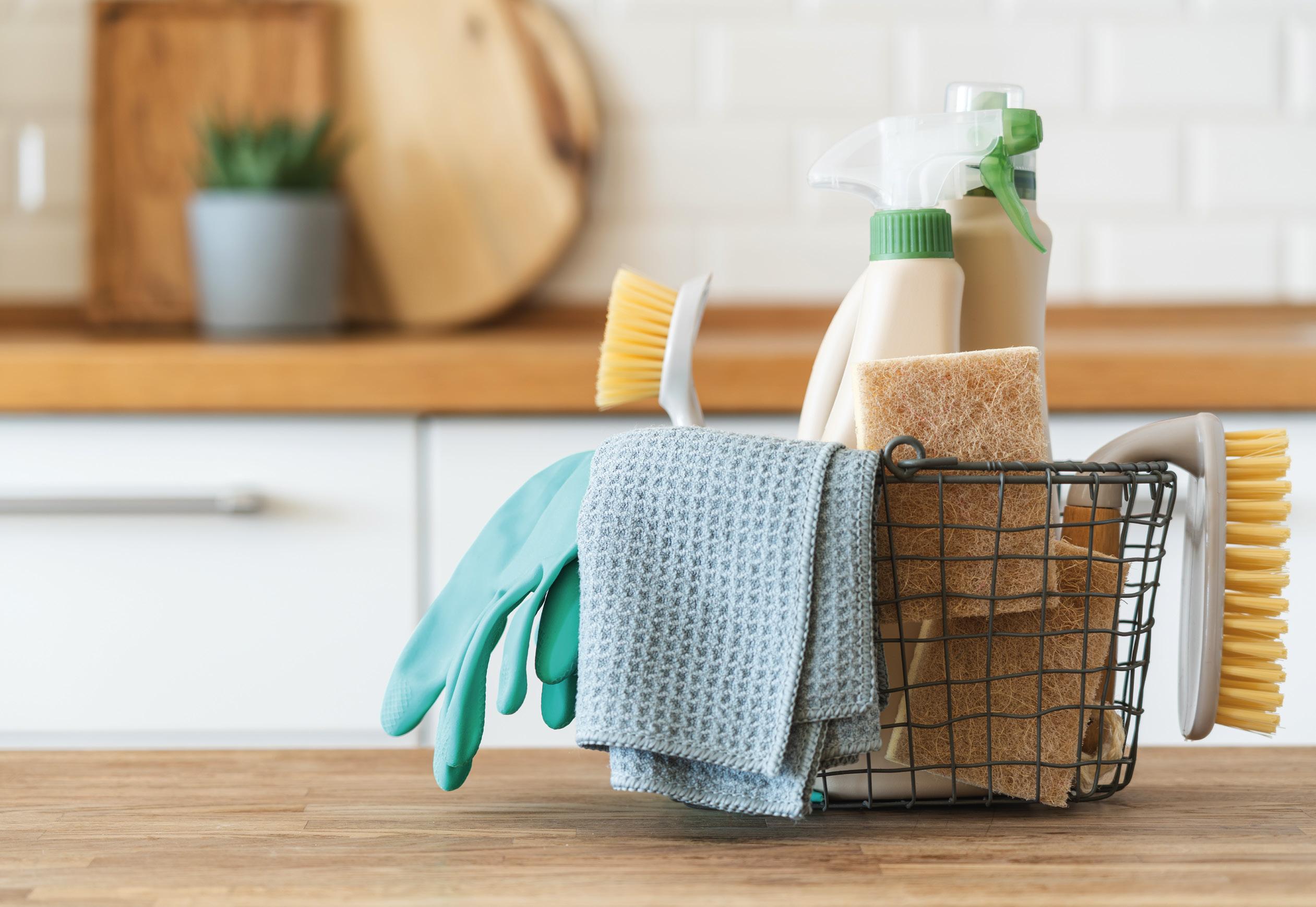
SPRING CLEANING can be a huge undertaking for many families. But what if it didn’t have to be?
For my household, spring cleaning is on autopilot. With two working parents and three active kids, there is little time to waste. One of the ways we do this is through decluttering, and we tackle it in bite-size pieces.
Constant decluttering may sound overwhelming until you consider its immense benefits. Physical space and mental space go hand-in-hand. Less clutter in your home can not only relieve stress but also improve sleep, productivity and reduce asthma and allergy risks, especially in the dusty parts of Arizona. It can also give your kids more independence and enhance their life skills.
The question is, where to start? There are two answers to this, depending on your personal motivation level:
Start with something small. A small drawer in a bathroom with personal items is a good choice. It’s small enough to do quickly and something you use frequently enough to
feel the daily benefit (positive reinforcement).
After you are done, determine what task you will do next. Schedule the day and time in your calendar. The goal is not to get it all done in one day, but to do a little more, one bite at a time. Continue this habit… well, forever. It gets easier every time you do it.
Don’t bite off more than you can chew. List all the areas you hope to declutter this year. Then, break it down by month. The kids' playroom may take four one-hour sessions, and the bathroom may take an hour.
The biggest motivation killer is when we inaccurately anticipate the time it will take. We end up with a half-baked closet purge and then have to leave for a soccer game. We get home late and live in the mess for the next three days. Plan your projects based on the time you have today and later this month.
1. Take everything out.
2. Dust, vacuum, and wipe down as appropriate.
3. Sort through the contents into four categories: Keep, Trash, Recycle, Donate.
4. Determine if you have the appropriate containers for the items you wish to keep. For example, do you need a drawer organizer, hangers, or a turn table? Buy as needed.
5. Add “keep” contents to the newly cleaned space.
6. Enjoy the satisfaction of a clean and organized space.
If you’re looking for an easy way to reduce stress, gain efficiency, and teach some life skills to your kids, decluttering may be a great choice. For more tips on managing time, money, and tasks, check out my book “Efficiency Bitch, How Ambitious Women Can Have It All Without Doing It All.”
Melissa Leon is a Tucson native, NAU graduate, and Mesa resident. She co-owns Two Sense Consulting, a bookkeeping and fractional CFO firm dedicated to helping small business owners learn to read and make decisions based on financial statements. Melissa is also a mother of three children.
GARDENING TEACHES CHILDREN
where their food comes from and instills a love for nature. It’s also a fun way to spend time together as a family. Use these ten tips to plant a seed for the love of gardening:
➊ Start small
Don’t overwhelm your kids with a huge garden. Start with a small plot or even a container garden so they can see results quickly.
➋ Choose easy-to-grow crops
Plant veggies with big seeds and the shortest days to harvest for quick results. Check a local planting guide (I have one on my website) to ensure you’re planting at the right time so seeds will sprout and grow well. My picks are radishes, peas, beans, and sunflowers.
➌ Grow things they like to eat
Research the crops your family likes eating, and find the best time and way to plant them. Do you love strawberries? Are carrots and broccoli favorites? They are excellent choices for kids’ gardens when planted at the right time.
➍ Let them help
Tasks will vary depending on age and ability, but allow them to do whatever they can in the garden. It may be messier or take longer, but they will feel pride in ownership. Simple jobs for kids include: Dumping, watering, and planting.
➎ Be positive and make it enjoyable
Look for the positive in their actions; don’t just point out mistakes. Make it a game. Are there weeds to pull? Everyone pull 20 and see how quickly we can finish. Keep gardening sessions short. A little bit each day is better than long sessions where they get tired and worn out.
➏ Make it a sensory experience
Let children feel the dirt in their hands and smell the fragrances of herbs and flowers. Found a worm? Watch it squirm on your hand for a minute before gently putting it back in the soil and watching it wiggle into the earth.

➐ Incorporate interests
If they like science, get a compost thermometer, watch the compost heat up, and then learn why. Budding artists can make plant markers from rocks or draw pictures of what’s growing. Do they like to take pictures? Have them document the process.
➑ Harvest and eat what you grow
I thought I didn’t like carrots until I ate one in my grandpa’s garden. Encourage your children to try everything and “practice” liking it. Find recipes to use the garden produce. Enjoy your locally sourced, farm-to-table harvests!
➒ Learn from the experience
Keep a garden journal to log harvests (weigh them, draw pictures, etc.) and tape seed packets in the journal. If things don’t grow
well, try to discover what went wrong and see if you can do better the next time.
➓ Share the miracles
Enjoy the magic of pulling carrots from the earth that started as tiny seeds. Look for new growth, blossoms, sprouting seeds, insect eggs, cocoons, butterflies, and rainbows. Spot something cool? Show it to them. Soon, they will make their own discoveries and share them with you.
A passionate gardener and mother of five, Angela Judd shares expert advice on growing vegetables, flowers, and fruit trees through her blog, Growing in the Garden, YouTube, and social media channels. As a certified master gardener and author, she specializes in helping gardeners succeed in the harsh desert growing conditions of Arizona and other hot climates.



THE FOSTER ALLIANCE, formerly Arizona
Helping Hands, is the largest provider of essential needs for children experiencing foster care in the state of Arizona. We have found that often, the 14,000+ children in foster care in our state arrive at their new homes with nothing but the clothes on their backs. That is why we provide essentials like beds, clothes, shoes, diapers, and even birthday gifts. In 2022 we served 3,600 children through the Thunderbird campus’s essential services program, and in 2023 we served more than 8,300 children in foster care.
The key is access.
In early 2023, we began tirelessly working to break down the barriers that foster families face when accessing our services. In February, we modified our service structure, allowing families to “shop” for complementary essentials at their convenience and return once every 30 days. The number of children we serve tripled overnight.
Then in July, with the support of donors through the Arizona State Foster Care Tax Credit Program, Phoenix Suns Charities, The Phillips Law Foundation, The Russ Lyon Foundation, and The Family and Friends of Dr. John Kriekard, we launched a mobile unit, allowing us to serve children across the state. During our inaugural journey, the #FosterAlly Mobile Unit made 12 stops giving backpacks
filled with school supplies to more than 800 foster children who previously did not have access to our services.
The shelves were bare.
These are amazing feats, yet they come with challenges. Right away, our inventory decreased rapidly, and for the first time in The Foster Alliance’s history, our team had to find ways to get a steady stream of clothes and shoes on the shelves through purchasing. We cannot bear watching a child walk out of our doors with no underwear, and unfortunately, that has happened. That is why the help of the community is imperative to the children of Arizona.
There are many ways to lend a hand and become a #FosterAlly:
1. Volunteer. You can volunteer at our centers or from the comfort of your home or office. One of our volunteers’ favorite activities is building birthday gift bags for foster children. They select and wrap presents based on each child’s wishes, decorate a gift bag, and create a special birthday card. Volunteers create 300 birthday gift bags each month!
2. Organize a drive. You can organize a drive to help us collect the brand new toys, shoes, diapers, and clothes
each child needs, or even shop our Amazon Wishlist. To serve each of the 700 children we support monthly, it takes a lot of resources. Learn more at thefosteralliance.org/portfolio-items/howto-help/#collection.
3. Donate. You can donate at thefosteralliance.org. We are a Qualified Foster Care Charitable Organization through the Arizona State Tax Credit program, so your donation of up to $1,051 could be given right back to you when you file your state tax return this year. Whether you can support one or hundreds of foster children, every dollar helps. Just $7 can give a child on a foster care journey socks for the week.
Too often, the trajectory of a foster child’s life is bleak, and we know that it is going to take all of us working together to help them change their stars. Our community is doing everything it can to prove to kids that they aren’t alone, they matter, and we won’t let them forget.
Join the squad at thefosteralliance.org where you can donate, shop our wish lists, or volunteer.
Bethany Eggleson is the Vice President of Development and Marketing for the Foster Alliance.
“LOOK WHAT I GOT” shouted Tucson first-grader Angelica as she opened her package that contained a cozy new pair of pajamas and book. “This is for me?” she yelled as she smiled from ear to ear.
Angel Heart Pajama Project is the vision of the late Graciela Lopez, mother of the co-founders, Maria Patterson and Marty Croissant. In 1963, these three Cuban-born women immigrated to the United States to escape from political, religious, and economic distress. During their early years adjusting to a new language and culture, Graciela found the means to provide new pajamas and books to enrich her children’s lives.

Today, a decade later, her vision has blossomed into an esteemed nonprofit entity, Angel Heart Pajama Project, which continues to gift new pajamas and books to needy children. Lopez and her daughters were able to realize their dream of “paying it forward” by sharing with children in need the same gift that had brought them such joy and comfort when they were young.
Angel Heart Pajama Project’s mission is “to provide new pajamas and books to children who are living in foster care homes, homeless shelters, abused or neglected, seriously ill, living in poverty, with special needs or a refugee in the City of Tucson, South Tucson, and in surrounding Cochise, Pinal, Santa Cruz, and Yuma counties in Southern Arizona.”
Since 2013, Angel Heart has provided more than 55,000 children with new pajamas and new books. The children served range in ages from infant to 18 who represent 86% Hispanic, 5% African American, 7% Native
pajama drives organized and sponsored by local businesses, schools, and churches. The organization actively engages with local communities, collaborating with schools, shelters, and social service agencies to identify and support children in need. Over 150 dedicated volunteers collect, sort, assemble, and distribute new pajamas and books to 85 local partner agencies to distribute the pajamas and books on behalf of Angel Heart.
Every child deserves a nurturing environment where they feel safe, loved, and cherished. However, for numerous children in our community, this fundamental right is denied, leaving them exposed to the harsh realities of poverty and deprivation. Angel Heart seeks to address the critical needs of these children by focusing on two essential elements: providing cozy pajamas and engaging books.
Angel Heart has demonstrated a profound impact on the lives of children and communities it serves by:
• Providing warmth and comfort to impact bedtime and the ability to have a restful sleep.
• Fostering a love for reading promoting literacy, intellectual growth and emotional and social development.
leading to more peaceful nights.
• Strengthening the community by helping to break the cycle of poverty by fostering relationships among children, caregivers, and volunteers to build a stronger sense of community.
“We are immensely grateful to our volunteers, donors, and partners who have made the last 10 years possible,” said Executive Director, Patty Lopez. “It’s inspiring to see how our community has come together to make a positive difference in the lives of these children. We are excited to celebrate this 10-year milestone and look forward to the continued impact we can make in children’s lives for years to come.”
For more information or to volunteer, visit angelheartpajamaproject.org
Joan Fawcett serves as the President of the Board of Directors for Angel Heart Pajama Project. She retired from a career in nonprofit management at the local, state, and national levels advocating for women and girls, individuals and families with developmental disabilities, and healthcare services. She is a snowbird from Minnesota and spends her winters in Tucson. She is also an active member of Rotary International.
TEENS WITH ATTENTIVE, communicative parents who spend time with them exhibit better health through decreased levels of stress, depression, anxiety and fewer incidences of substance abuse and unintended pregnancy.
That’s the conclusion from a recent study by the Children’s Hospital of Philadelphia.
The study also confirms that a strong connection to parents is also linked to teenagers’ greater feelings of optimism, healthier romantic relationships, and reduced suicide risk through young adulthood.
To build a stronger bond with your teen, consider implementing the tips following these seven questions:
1. Have you connected with your teen today?
Make connecting with your teen part of your daily routine. Identify the most natural time to connect, like after school or during dinner, and intentionally check in. Ask specific, open-ended questions about their day to foster more meaningful responses.
Sometimes, it’s easier for kids to open up when they don’t have to look directly at you. Going for a walk together, driving in the car or doing chores together may make it easier for them to talk to you.
2 . Are you a being a good listener?
Being in the same room with your teen isn’t enough. Demonstrate active listening by putting away electronics and focusing on your teen. For a more meaningful conversation, pay attention to their non-verbal cues and ask good follow-up questions. Even if your child doesn’t share their emotions daily, regularly setting aside time creates an opportunity for them to open up when they’re ready.
3. Do you make your teen feel competent?
When teens confide in you, avoid trying to solve their problems for them. Offering solutions prematurely can make them feel incapable. Instead, actively listen, ask relevant questions, and empower them to identify their emotions while they consider constructive solutions to the issues they’re facing.



4 . Are you overly critical?
Everyone makes mistakes. Resist the urge to comment on them. This includes offering suggestions for improvement. You may think you’re being helpful when you provide “coaching” after a school event or athletic contest – but your teen is likely to perceive it as criticism.
5. Are you engaging in their interests?
Taking an interest in your teen’s hobbies and passions provides ample opportunities to connect. Make time to attend their games or performances. Let them choose the music in the car or a show you can watch together during the weekend. Engage in their favorite hobbies with them. Ask them to teach you about their hobbies – you’ll be surprised by how much they know that you don’t.
6. When is the last time your drove your teen and their friends somewhere?
One of the easiest ways to learn what’s going on in your teen’s world, is to offer to be the chauffeur for them and their friends. Listen to what they talk about while they’re in the car. You’ll learn what’s happening at school, what they’re excited about, and what
they may be worried about.
7. Have you talked to your teen about other healthy adults they can go to for help or advice?
Teens won’t always want to talk with their parents – that’s normal. Help your child identify safe adults who they can talk to when they face problems they’re not comfortable discussing with you. This could be other family members, close family friends, teachers, coaches or clergy.
By integrating these simple yet intentional practices into your daily routine, you can foster a strong relationship with your teen that will have a lasting positive impact in their life.
Nikki Kontz, LMSW, is the clinical director at Teen Lifeline, a Phoenix-based, nonprofit dedicated to preventing teen suicide through increasing connection and resilience among Arizona’s teens. If you know a teen who is considering suicide or who needs mental health help, encourage them to call Teen Lifeline 24/7/365 at (602) 248-TEEN (8336). Texting is available between noon and 9 p.m. on weekdays and from 3 p.m. to 9 p.m. on weekends.

Then you have likely experienced the joy and frustration of boundaries… boundary-making, boundarybreaking, and boundary frustration.
Being a teen has its challenges as does it for the adults who love them. Parents are learning how to interact with their children as they grow and mature. Teens are learning how to become separate from their parents to become independent adults.
This is no easy task for any of us! Boundaries will look different for every household, but they hopefully will be consistent, respectful, achievable, helpful, and coming from a place of love.
Boundaries are the rules that define our limits and expectations. Boundaries help define our family culture and teach the values and skills our teens need to feel the most secure at home and when they are with others as well as learn skills of responsibility, accountability, and independence for the real world.
As a parent, knowing yourself and what you want for your home, and your relationships is key. Knowing what you want to teach your teen will help clarify and structure the boundaries you have in your home. It is important to know your limits and values.
Remember, it is a balance of when to
compromise with your teen and where to draw the line. When we are clear about who we are and what we are willing to do, it makes the boundary expectations, consequences, and rewards clear. When the inevitable push against parents’ boundaries occurs, it is easier for us as adults to manage when we understand the why behind the boundary.
This is a two-way street. When we are respectful and communicate healthily with our teens it models how we would like for them to communicate with us. Remember this is a learning process for your teen. We strive for progress, not perfection. Being as aware of your feelings can help guide you in your communication with your teen. Strive for respect, clarity, and kindness.
Be clear about the rules, i.e. boundaries. Write them out so that everyone is clear about the expectations. Creating accountability is an important life skill. Involving your teen in creating the expectations of boundaries and consequences will give them a sense of ownership and understanding. Compromise is important but only if you are comfortable with the boundary. Involving your teen in creating the boundaries collaboratively will foster
accountability and help your teen learn about compromise and responsibility and hopefully have them feel more invested in the boundaries.
It is important to work out the consequences at the time when the boundary is being set. We want to discipline your child, not punish them. Discipline teaches while punishment is just that. If the consequence is clear and natural it helps your teen understand the expectation and how to prevent the consequence the next time. When creating your family boundaries keep in mind, we don’t want to be rigid, we don’t want to be permissive, but we strive for something in between. Being consistent in expectations and consequences will help enforce the boundaries. Rewards are important to strengthen positive behavior and show you are aware of your teen’s success. “I noticed you got home before curfew last night.” Acknowledging when your teen is doing something well with a reward is also a great incentive to keep that positive behavior going.
Rachel Rubenstein, LCSW is a therapist and partner at The Counseling Consultants, a group of mental health providers located in Arizona, focusing on teen, family, adult, and couples counseling support. Rachel also contributes articles for IamTeenStrong.com , which supports teen health & wellness.

ONE OF THE NEARLY universal hallmarks of teendom is a desire to earn their own money or explore a career interest. Teen engagement in the workforce, whether an internship, part-time job or full time summer job can have many positive benefits for your child including:
• Greater financial independence
• Career exploration
• Time management
• Communication skills
• Work ethic
• Self-confidence
• Increased likelihood of future employment opportunities
Here are a few tips to help make informed decisions on your teen’s employment aspirations:
Overall, your child’s interest in employment should match their level of personal responsibility. Where does a realistic part-time or full-time summer job or internship fit? Here are some things to ask them:
• Do you have adequate time in your
schedule to fit a part-time job and keep up with all the demands on your time?
• Do you understand what it means to be fully committed to your role with an employer?
Be ready to explain/point out that working may mean missing out on some of the very fun they’re hoping to experience with their new earned money. If they answer yes, more than likely, they may be ready for their first job.
When it comes to whether your teen should be looking for an internship opportunity or regular paying part-time job, have them weigh the opportunity against the need for money, and the skills they will acquire. Have your teen think about what they would like to get out of the opportunity by discussing the following:
• Is their reasoning primarily financially based?
• Is there a specific skill set needed for a long-term goal they are wishing to acquire?
Typically, internships are more career oriented, working to a more advanced position
in that field, while part-time jobs are more about earning spending money and teaching responsibility.
Parents can empower their teens to find employment opportunities in their communities by encouraging them to check out different resources like online job boards, job fairs, or using their own (or your own) personal networks. Schools can also be a great resource as sometimes businesses may reach directly out to the guidance office with openings they are trying to fill.
What’s it going to cost in transportation and other expenses to accept a job? What does your child want to do with the money they earn: Save for college, buy a car, buy a concert ticket?
Understanding the anatomy of a paycheck and financial goal setting are great entry points for young people to begin constructing healthy financial lives.
Bank of America offers a free, online financial empowerment website called Better Money Habits that includes self-paced training modules to help young people (and adults) understand important financial concepts.
As with any newly acquired interest or responsibility, monitor how it’s impacting your child’s life. Frequently check-in and help them keep a growth mindset because these early career experiences are a learning lab and more about practice than perfection.
Scott Vanderpool is the President and Market Executive of Bank of America Phoenix. He also leads the effort to deploy the company's resources to help advance economic mobility and build strong communities, and currently serves as the board chair of the Arizona Banker's Association and a board member of ICAN: Improving Chandler Area Neighborhoods and Education Forward Arizona. He and his wife are raising two amazing Arizonans.

THE CHAOS of hormone fluctuations postbaby can be enough to deplete your energy, strain your relationships, and leave you feeling completely out of touch with yourself.
The demands of a newborn combined with sleep deprivation in those early postpartum days is enough to leave you feeling burnt-out, desperate, and stuck in “survival” mode— something that can be hard to come back from.
As a mom, I know how frustrating this battle can be. All you want is to enjoy this precious new human and embrace your new life as a mom with excitement and love… not exhaustion and irritability.
And while, yes- getting more sleep is one of the best ways to recover, that kind of advice can be rather frustrating when it’s not something you have total control over.
It’s also kind of confusing if you are back to full nights of sleep, but are still tired all the time.
The good news is there are plenty of other practical ways (that you DO have control over) to regulate hormones, balance out energy levels, and get back to feeling “like yourself” again.
Nutrition is one of the most fundamental forms of self-care we have, and our most powerful tool in re-balancing hormones after baby.
Here are five things you can focus on implementing in your food and supplement routine to get you on your way to reducing your stress, anxiety, and exhaustion as a mom:
Healthy fats are an often overlooked major
food group, but they are essential for proper hormone regulation.
You can add in more healthy fats by incorporating the following into your meals and snacks:
• Extra virgin olive oil
• Avocados
• Bone broth
• Wild-caught fish (like salmon)
• Brazil nuts
• Walnuts
• Almonds
• Macadamia nuts
“Estrogen dominance” post-baby can lead to fatigue, headaches, irritability, weight gain, and feeling moody and emotional. Fiber can be really beneficial in clearing out this excess estrogen and bringing your progesterone/ estrogen levels back to a healthy balance.
Incorporate more fibrous foods like:
• Cruciferous veggies (broccoli, kale, and cauliflower)
• Flax seeds
• Psyllium husk
B vitamins and Vitamin C are critical for many functions of the body including optimizing adrenal health, which can help improve the body’s stress response and reduce fatigue.
Adaptogens like Ashwagandha, Rhodiola, and Holy Basil help regulate energy levels,
support the body’s natural circadian rhythm, and promote more restful sleep.
Do your best to avoid or reduce added sugars, alcohol, caffeine, and ultra-processed foods.
Well-balanced nutrient-dense meals, regular exercise, and being intentional with caffeine are the basics. But a little extra support can make a big difference in quickly eliminating midday crashes, overcoming brain fog, feelings of overwhelm, and returning to your healthiest weight.
Need more help? I offer a 16-week personalized program designed to help moms develop a realistic eating routine to improve gut health, balance hormones, and trade stress and anxiety for confidence and contentment.
For more information on coaching, or for more nutrition tips and free resources, connect with me at linktr. ee/alaynafranci or on Instagram @ alayna.f.coach
Alayna is a former chemist and teacher turned online nutrition and transformation coach. Her mission is to help women overcome the functional and physical health struggles holding them back, so they can lose weight, feel better, and find joy in their everyday life again. She is an Arizona native, has been married for seven years, and is a mom to a beautiful one year old girl!




THE DESERT HEAT is on its way, and every Arizona parent knows what that means—pool time! While your first thought may be about reopening your backyard paradise for the sunny months ahead, a very close second should be how to keep your kiddos safe in and around the water.
With swim classes across the valley filling up quickly, we reached out to Kerin Morgan, Aquatic Support Expert, at Aqua-Tots Swim Schools to learn more about what families should have on hand to support swimming skills at home.
“Toys create a less threatening way to introduce some of the properties of water,” says Kerin. “They are tactile, colorful, and, if used correctly, enhance the learning experience.”
It’s important to note that inflatable floaties or water wings should be avoided as they pose a tremendous risk to a child’s safety. These toys are easily removable, provide a false sense of security, deflate easily, and prevent proper swimming techniques.
When purchasing tools to support safe swimming, here are five items that compliment swim lessons:
This colorful creature is a buoyant toy and used at the surface of the water. Tots learn to reach for and focus on the fish, and this focal point is helpful as parents teach their future swimmers to go underwater. As children progress, the squirty fish is used to teach about buoyancy so they learn to associate air in the object with the breath in their lungs. If Mr. Fishy holds his air, he floats. If he blows it out, he sinks.
These are sinking toys that help children learn that not everything floats or holds air, and these objects go down to the bottom of the pool. Children begin to see that their view of the toy down below is different than on land, and they can get used to the feeling of reaching and grabbing for something underwater. We want children to be comfortable in deep water, and this is where they can feel deeper depths and learn how the water can pick them up.
When learning to swim, a child needs to understand that they have limitations and don’t swim safely until they have skills. Pool noodles with connectors on the ends place the responsibility of floating on the parent and the child, instead of depending on wearable inflatable toys, such as water wings. The child has a responsibility to hold the toy and the parent has the responsibility to watch them closely. This ensures the child is practicing manipulating their movements in the water and learning to propel.
While kickboards get a lot of attention, children should wait to use them until they have developed core strength and know how to independently propel five to six feet underwater. The skills associated with kickboards are usually learned when a child is older than four, and if you give a kickboard to a child too early, they will fall off. Older children are learning to swim horizontally in the water and get their own air, making the balance of the kickboard more developmentally appropriate.
Our goal is that everyone eventually learns to swim without goggles, however, the learn-to-swim process can be unsettling for small children. Developing so many new skills with closed eyes only magnifies their anxiety, and goggles can help calm unnecessary nerves. Later, when they have learned to trust the water and their skills, we teach them to open their eyes without goggles because all children should know what to do if they ever fall in the water unexpectedly. Additionally, swimming for longer than 30 minutes without goggles can cause eye irritation, and with so many swimming memories to be made, we want their eyes crystal clear to capture all the splishy-splashy moments!
Founded in 1991 and headquartered in the Phoenix area, Aqua-Tots Swim Schools is making waves as the largest international provider of year-round, indoor swim instruction. With more than 150 locations in 14 countries, its trusted program is dedicated to children of all abilities from four months to 12 years old,and features a proven curriculum used to teach more than five million swim lessons each year. For more information about Aqua-Tots visit aqua-tots.com






is one of the most challenging and important decisions for families. As parents, we want a stable option that will provide a safe and nurturing environment for our children. In today’s world, we also need flexibility because our jobs quite often go beyond the traditional nine to five. It’s a tall order!
Most families look at daycare centers or hire a nanny, but waitlists can be long, and rates are increasingly unaffordable. There is also a less well-known childcare option that families across the United States have been utilizing for over thirty years: the au pair program.
An au pair is between the ages of 18-26 and from another country. They come to the U.S. on the Department of State’s Exchange Visitor program to live with a host family. The program is federally regulated and allows au pairs to provide up to 45 hours per week and up to 10 hours per day of childcare while experiencing life as part of an American family. For host families, it’s a reliable, flexible, and trustworthy childcare solution
that brings culture and fun to the home. For au pairs, it’s a chance to see a new part of the world, improve their English, and broaden their horizons.
Hosting an au pair offers flexibility that other childcare options can’t provide. Since au pairs live with their host family, they can provide childcare before and after school, during snow or sick days, and on some weekends. Living with you leads to a sense of mutual trust, and your au pair comes to know your kids’ needs and schedules as well as you do. They truly become an extended member of the family, and these relationships often last a lifetime.
The State Department requires au pairs to be high school graduates or the equivalent, and pass a screening process that includes verification of their education, a criminal background check, and a personality profile. Finally, they must provide three personal and professional references.
Families who host an au pair must provide a suitable private bedroom for their au pair, be a U.S. citizen or legal permanent resident, and pass a criminal background check.
Costs vary by agency, but typically the yearly expenses are less than full-time daycare or nannies, especially when more than one child is being cared for.
Families must use one of the 14 official sponsor organizations to arrange their au pair program experience. Cultural Care Au Pair is the largest agency in the U.S. with almost 35 years of experience and offering au pairs from more than a dozen countries. It covers the Phoenix and Tucson areas, working with families and au pairs throughout Arizona.
To find out more about the program, visit culturalcare.com

AFTER LEARNING my second child would be two children, I spent my pregnancy full of worry and wonder about what it would be like to have twins. What would I be like as a twin mom? Would I be enough? And how was this going to work? No, seriously.
I have learned a lot in this two-and-a-half-year journey, and still have much more to learn, but I want to share my top three twin experiences that have educated me the most:
THE LOGISTICS. Having twins means everything happens two-at-atime. Think of the hassle it is to get a baby or toddler ready to leave the house, the process of actually leaving, then the experience of being out-andabout. Now double it. Double the socks and shoes, the baggies of snacks, the car seat buckles, the bodies that need to be moved from here to there. Depending on the outing, this may involve double the wrangling, the chasing, the catching as they exit the slide. Two small children mean four legs running at the same time in the opposite direction.
It is easier to stay home, where we can work things out in private. I’ve adjusted to reading a book to two kids in my lap – we skip a lot of pages. We’ve figured out the right positions for two in the tub. We’ve learned which twin likes which cup and fork, and in what order and fashion snacks and meals can be distributed. I have two hands, but twins require I have two bodies.
THE SPACE. Before they even arrived, I realized I needed more space than I had. I needed two cribs to fit in one room and two more car seats to fit in the car (I’m a minivan mom now). I needed a larger diaper bag and a spacious dresser. Once they arrived, I fantasized about hiring a full-time bottle washer to manage the situation taking over my sink and countertops.
As is true of most toddlers, my twins no longer like to share, so I buy two of just about everything. This creates a few conundrums in the categories of space, storage, and my sanity. They also need more room to play and move. They take up the whole couch when we watch a movie. We have traffic jams in the hallway, on the stairs,

and often in the pantry. Everything in our world—except for our family—seems to have shrunk.
THE COST. If you’ve had a baby, you are all too familiar with the amount of “stuff” they seem to require. Even though our income didn’t double, we found ourselves spending twice as much on car seats, cribs, bottles, formula, diapers (oh, the diapers!), and doctor’s visits. Soon we will pay the price for two in pre-school, sports activities, music lessons, and someday braces and car insurance.
We save where we can; we reuse, shop at thrift stores, gladly accept hand-me-downs, and often times we do with one in cases when two would really be better. There will be more to figure out as we go, but I worry that those small sacrifices will begin to feel greater as my sons get older.
When that black and grey oven reveals two buns inside, a twin mom’s brain starts working double-time. And even though I struggled to see how it was all going to work, it turns out there was plenty of room for them after all.
Amy Davis received her Bachelor of Arts in Literature, Writing, and Film from Arizona State University. She spent five years teaching middle and high school English before leaving the classroom to raise her family. She is a mom to her sixyear-old daughter and two and a half year old twin boys. When not consumed by mom duties, Amy’s favorite things to do with her family usually involve being outdoors and exploring their new location in the White Mountains.

These days you can find a subscription box service for just about anything—toys, books, clothing, self-care, food—you name it, you’ll likely find it.
Here are 10 of our favorite subscription box services for kids of all ages:
Bitsbox: Bitsbox is a learning system that teaches kids how to code. Each level introduces a new computer science concept with a set of app projects that come every month! Bitsbox strives to make STEM education a part of kids’ everyday lives—focusing on computational thinking, computer science, and coding. Designed for kids 6 to 12 years in age. Subscription boxes start at $16.95 a month.
Creation Crate: Unleash your inner inventor with Creation Crates—which combine e-Learning with hands-on projects, so kids aren’t just gathering knowledge, they’re putting it to use. Creation Crate strives to find creative ways to teach all kinds of subjects through hands-on learning. Curriculum-based learning boxes are designed to learn about electronics, chemistry, and
engineering. Recommended for ages 10 and up. Boxes start at $39.99.
Crunch Labs: Kids will learn how to think like an engineer as they build their own toys with simple step-by-step instructions. Every month a Build Box arrives with a build-ityourself STEM toy centered on a different engineering concept, and features a toy that uses that concept for kids to build, learn, and play with. Boxes include the project components, a booklet with picture-based instructions, STEM concept explanations, activities and challenges, and a gear badge that celebrates what they just learned. Designed for kids ages 8 and up. A yearly subscription costs $299.40.
Kids Art Box: Discover and bond through the magic of art, without the headache of looking for the right activities and the right supplies. Kids Art Box comes with everything you need and easy to follow, step-by-step instructions. You’ll get three art activities, one science project, and one visual recipe or origami tutorial, plus high-quality art supplies. No mess ups or meltdowns. Just
open the box, start creating, and have fun! This subscription is designed with children between ages 3 and 7 in mind. Boxes start at $38 a month.
KiwiCo Crate: KiwiCo’s nine lines offer monthly educational projects to enhance play and learning. Simply choose your child’s age range, select a crate based on their age and interest, and leave the rest up to KiwiCo to deliver awesome monthly activities! Every single crate is designed by STEAM (Science, Technology, Engineering, Art, Math) experts and tested by kids to ensure that every crate is engaging and seriously fun. Starting at $23.95 per month.
Lalo: A new expert-developed learning experience, The Lalo Play Boxes take the guesswork out of parent-led learning with sustainably made and researched-backed toys to support discovery and encourage curiosity from birth to 24 months. The Play Boxes are delivered every two to three months and include beautifully designed, non-toxic toys that support little ones’ big moments of
growth and joy. Subscriptions start at $80 per box / Individual boxes start at $90 per box.
Literati: Help maintain and improve kids’ reading skills with custom-picked books delivered monthly through Literati, a kid’s book subscription that sends personalized books for every stage of reading picked by experts. Book curation starts with your child’s reading preferences and improves based on the books added to their library and any feedback given on the titles you receive. Keep the stories they love, and send back anything they don’t with the included prepaid return label. Fourteen different reading levels offered, from babies to 8th grade! Starts at $62.95 a box.
Messy Play: Messy Play offers convenient ready-to-play kits and sensory bins so you can provide the educational and sensory processing benefits of messy play while enjoying time spent with your child. Each Messy Play Kit comes with materials and instructions for three to five activities, an affiliated website with detailed photo instructions, educational resources, and extra ideas for play! All kits are for ages 3 and up, and contain non-toxic, washable materials. Starting at $44 a month.
Raddish Kids: Let your kids discover the joy of baking, cooking, and cultures with Raddish Kids’ clubs. All three Raddish clubs deliver culinary experiences that nurture confidence in the kitchen and beyond, teaching kids and families to cook and bake! Raddish offers an expert framework that makes cooking with kids easy and fun. Kits include step-by-step Recipe Guides and Skill Lessons, a quality kitchen tool, a creative kitchen project, an apron patch, and collectible Table Talk cards. For kids ages 4 and up. Starting at $27.95 a month.
T is for Tot: These Pinterest-like activities made by a toddler mom and kindergarten teacher are designed to prepare your little one for kindergarten. Each kit includes STEM experiments to pique curiosity, arts and crafts projects to encourage creativity, a children’s book to reinforce learning, handmade nontoxic play dough, and more! Explore different themed boxes including camping, space, under the sea, insects, and airplanes. Prices start at $48.
Whatever kit you choose, get ready for endless play, discovery, and learning—all from a box. Enjoy!

TOY ROTATION seems to be a hot topic right now, and it’s definitely something I can get behind. If you’re not quite sure what toy rotation is, or don’t know how to do it, here are some tips on this beneficial hack that will help your kids actually play with their toys:
What is toy rotation?
Toy rotation is the idea of keeping some toys hidden away and having some toys accessible to your child, then thoughtfully swapping them out on a schedule to keep things fresh and interesting.
What are the benefits of toy rotation?
Increases excitement: Loads of clutter can be overwhelming to adults and kids alike. If there are too many options, kids can easily become overwhelmed and simply shy away from their toys, making it seem as if they’re bored or tired with what they have. When we present a limited selection, kids are better able to see and access something they will find enjoyable.
Have you ever found a favorite shirt at the back of your closet that’s been out of sight and out of mind for a while? It can be so exciting and feel new and fresh. The same goes for toyswhen we hold back toys that have gone stale, they become exciting again.
Encourages independent play: Toy rotation can also be a powerful tool for encouraging independent play. We can encourage our kids to play independently by facilitating “Invitations to Play”. This can be small set ups we do for our kids such as starting the foundation of a block castle and setting the larger bucket of blocks nearby with a few
residents of the castle.

These can be simple or elaborate. I’ve seen awesome car tracks built from Connetix magnetic tiles set up for kids, but don’t put pressure on yourself to make it something big. Sometimes the simplest ideas spark the best play.
How many toys should be out at a time?
I encourage anywhere from three to eight toys out at a time. Notice how your child handles more- does clean up overwhelm them or happen easily? Do they end up running out of things to do too quickly? There are no hard set rules for toy rotation.
The same applies for how often to rotate toys out. I’d suggest anywhere from three days to a week, depending on your child’s interest. If there is a toy out that is a particular favorite, feel free to leave it and swap out a few of the others.
Take your queues from your child- it may require some trial and error to figure out what works, and as we all know, what works well today could totally change tomorrow so stay flexible.
Jenn is an educator with over 12 years of experience working in Special Education and the owner of Wildlings Toy Boutique in Phoenix. While working with children with exceptional needs and raising her own two children, she became an expert in the power of play for growth. Jenn started Wildlings to share her passion for purposeful play with other families by helping them select meaningful toys that spark creativity, engage minds and support skill development.


DETERMINING THE APPROPRIATE start date for a child’s entry into kindergarten often revolves around a calendar day cutoff. However, while calendar dates are a significant consideration, parents should also evaluate additional factors in the decisionmaking process.
Here are some things to consider as you contemplate whether your child is ready for kindergarten:
Academic Readiness: One aspect to assess is the child’s academic readiness. This involves determining whether the child has been exposed to fundamental math and reading skills, such as recognizing numbers and letters. It is important to gauge the child’s ability to count and comprehend age-appropriate stories.
Social and Emotional Skills: In addition to academic preparedness, parents should examine the child’s readiness in social and emotional skills. Successful kindergarten students must possess the ability to self-regulate their emotions, work both independently and collaboratively within a group, and exercise impulse control. Poor impulse control may lead to chronic disciplinary issues, adversely impacting the child’s self-esteem over time.
Communication: Language skills and the ability to seek assistance also contribute significantly to a child’s success in kindergarten. Effective communication, including vocabulary and self-awareness skills, enables the child to advocate for themselves throughout the day. Polite methods of attracting adult attention and expressing needs become essential in the kindergarten classroom.
Physical Development: Physical development plays a role in kindergarten readiness, requiring students to have the stamina for a full 6-hour school day. Proficiency in self-care tasks, such as feeding oneself and addressing basic bodily needs, along with engagement in physical activities, is key. The development and utilization of gross and fine motor skills are fundamental for daily success.
When contemplating the decision to delay a child’s entry into kindergarten, it is essential to weigh the benefits and drawbacks carefully. Providing an additional year of preschool is often viewed as a “gift of time,” allowing for the natural development of skills. However, drawbacks may include potential academic boredom and a sense of being out of sync with future peers with milestones such as driving and dating.
• Ability to use a writing utensil, engage in listening to stories, and counting activities
• Seeking help with appropriate language skills
• Regulating emotions in new situations
• Independently managing basic needs
• Successfully following rules within a group setting
Parents are encouraged to consider the holistic readiness of the child, taking into account strengths and concerns. Consulting with experts such as the child’s current preschool teacher, pediatrician, or leaders of daycare and camps can provide valuable insights. Utilizing one’s support network is crucial in making this initial step into formalized schooling.
An Arizona native, Dr. Gayle Galligan has been a teacher of the gifted, a staff development trainer, a mentor to teachers and administrators, a leadership developer for administrators, and a principal of a Title 1 K-8 school before moving to the district level. She is currently serves as the Deputy Superintendent of Curriculum, Instruction, and Assessment in the Deer Valley Unified School District and oversees all areas that impact students PreK-12.


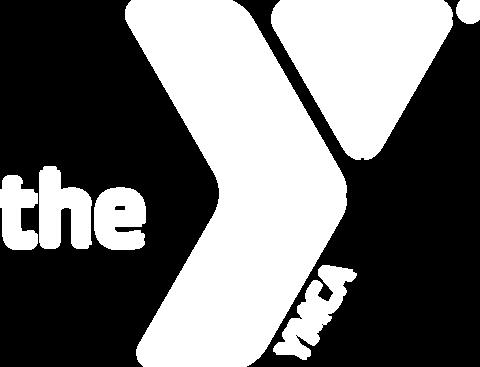
































































































AS A TEACHER for over 33 years who has taught both preschool and kindergarten, I have seen firsthand the benefits of preschool in preparing children for kindergarten. However, I understand that not all children attend preschool—some stay home and spend quality time with a parent or family member until beginning kindergarten.
If you are a parent to a toddler, you may be wondering which route is best for you. Is preschool necessary in order to set your child up for success in kindergarten?
Here is a breakdown of the many ways in which preschool will help prepare your child as they embark in their academic endeavors, and also ways that you can play a role in your child’s education without sending them to preschool.
Socialization. One of the big benefits of enrolling your child in preschool is the social aspect. In a preschool setting, children are taught cooperation, negotiation, problem-solving skills, and how to get along with others.
Academics. In preschool, kids will have a chance to practice fine and gross motor skills, as well as being introduced to phonics, math, science, and social studies as part of a preschool curriculum.
Rule-following. Learning to follow directions and rules of a classroom gives children a head start in kindergarten and teaches them independence. Also, being in a group setting teaches children how to be patient and wait their turn.
Adjusting to a school setting. Preschool is a great way for kids to learn to adjust to being in a school setting and routine. They can start out as half day students and end up as a full day preschooler ready for the full school day that awaits when they begin kindergarten.
Parents are their children’s first teacher and can play a big role in making school a positive and fun experience. If preschool is not the route for your family, I would encourage
you to work on some of these skills at home, and get out in the community for activities with other children to help your child feel comfortable once kindergarten starts.
Here are some things that you can do at home to help prepare your child for kindergarten:
Read. First and foremost, read nightly. Use this time to help them predict what the story will be about. Ask who their favorite character is, what they think may happen at the end of the story, or how they might change the ending of the book. This fosters a love of reading.
Cook. Cooking with your child teaches math, how to follow directions, and helps them understand sequencing.
Work on fine motor skills. Sorting can be taught by unloading the silverware from the dishwasher, or matching socks. Playing with playdough, using a spray bottle of water, or coloring with small broken crayons all foster fine motor skills.
Teach letters and numbers. Concentration games with letters and numbers help with focus, as well as helping them learn the names of the letters and numbers.
Practice with scissors. Expose your child to child-size scissors. Have them cut out coupons or pictures in catalogs for fun practice.
Mix up the learning. Not all children will learn best by sitting at the table and coloring or writing—some may need more hands-on opportunities to learn. Go on a scavenger hunt to find letters and numbers, or use a child’s love of building to incorporate letters and numbers.
Get out in the community. One example of this would be to attend story time at your local library. It’s a great way to expose kids to reading, get them socializing with other children, and typically is followed by an activity.
No one knows your child like you do, so as you make the decision of whether or not to send your child to preschool, choose the route that you feel is most suitable to your child’s individual needs, personality, and what works best for your family.
Denise Matus holds a Bachelor's degree in Education and a Master’s degree in Early Childhood Education. She has been teaching in the Fountain Hills Unified School District for 33 years, where she has taught both preschool and kindergarten. She lives in Mesa with her husband of 42 years, has two adult children, and four grandchildren.
IT IS ALMOST that time of year again. Before you know it, your child is ready to enter their first year of school. Along with the lengthy checklist of back-to-school items, don’t forget a crucial element to the success of your child: Their well visit with their pediatrician.
The importance of visiting the pediatrician before school starts


Your pediatrician can help your family promote school readiness. Per the AAP (American Academy of Pediatrics), the physical, social, language and emotional development are all crucial components to help your child transition to school. Even if your child is not sick, scheduled well visits with your pediatrician are important for several reasons.
What to expect during the appointment
At this visit, your pediatrician will assess your child’s physical growth, vision, hearing screen, and vitals (blood pressure, temperature, weight and height). If not already completed, lab evaluation may include screening for lead and anemia.
Screening for age-appropriate milestones will not only determine your child’s fine, gross motor and receptive and expressive language skills, but will also look at how your child reacts in social and emotional settings.
An updated 2019 AAP statement regarding school readiness said that: “An individual child’s school readiness is determined in large measure by the environment in which he or she lives and grows” and ultimately, early experiences count.
Your pediatrician will give information on healthy nutrition, amount of sleep (10-13 hours including naps) and activities/exercises recommended. And let’s not forget about vaccines to help your child stay healthy. At this visit, it will also be important to see if your child is up to date on their routine childhood vaccines, but at age four, your child will be eligible for their last MMR (measles-mumps-rubella) and Varicella (chickenpox), IPV (polio) and an update on their DTaP (diphtheria, tetanus and pertussis).
It is understandable that your child may have fears of going to their pediatrician for several reasons such as separation, pain, or being afraid of their doctor.
How can you help your child? Prepare them prior to the visit and tell them what will occur such as explaining certain parts of the exam. Tell your child that their pediatrician is there to help them. There are several children books illustrating a visit to the doctors. Play doctor prior to the visit including having your own child pretend to be the doctor. Your child may also choose to bring a toy or object that helps them feels safe.
If there are concerns, your pediatrician can help you find resources to help your child succeed. You and your pediatrician are an awesome team to help your child get ready for school.
Dr. Tien Nguyen is a board-certified pediatrician at Desert Pediatrics (Desertpedsaz.com) in Tucson, Arizona. She completed medical school at the University of Arizona and her pediatric residency at UCLA. She believes in the importance of preventative medicine and enjoys working with families to help them raise happy, healthy children.


EDUCATION IS A topic of great importance nationwide, and here in Arizona, the landscape of educational choices is constantly expanding. Families navigate a variety of options, from traditional to online, charter to private schools, to best meet their children’s unique needs.
If you’re thinking about making a move to a private school but are concerned about affordability, planning and budgeting can help alleviate the stress on your family’s finances. Every situation is unique, but starting to plan and budget now can help take the stress out of your family’s education costs for years to come.
Start planning early.
If you know your child is heading to a private school soon, start planning now by creating a monthly budget to anticipate spending changes. Compare tuition costs at different schools, including additional fees for activities such as sports, to compile a comprehensive list of yearly expenses. Some schools may negotiate tuition rates, so understanding your family’s financial standing beforehand is crucial. Look into potential discounts for multiple siblings, especially if a middle schooler will be joined by a younger sibling in a few years.
Payment Programs: Saving on private school costs can be made easier by exploring payment programs and inquiring about monthly payment plans to manage tuition expenses more effectively.
Scholarships: Research available scholarships, both school-specific and external, applying for need-based and meritbased options early in the application process.
ESA program: Look into the Empowerment Scholarship Account (ESA) program to determine if your child qualifies. azed.gov/esa
Tax Credit program: Check if the school participates in the tax credit program and is affiliated with a Certified School Tuition Organization, potentially allowing friends and family to contribute to your child’s tuition during tax time. Visit the Arizona Department of Revenue website to learn more about the program and which organizations are accredited.
Maximize your benefits each time you make a payment.
Maximizing benefits with each payment can include setting aside money in a highyield savings account or certificate program to earn interest for lump-sum tuition payments.
It’s important to think about your payment options and the benefits you can get from your chosen payment schedule. If you pay off your credit card every month, you can use it to pay your tuition fees either in a lump sum or in monthly installments. This way, you can accumulate a significant amount of credit card points that you can redeem for various rewards.
Don’t hesitate to ask questions about potential rate reductions, customized payment plans, or opportunities to offset tuition costs through volunteer hours.
Their future starts today.
Planning for the future involves exploring long-term savings options, such as setting up a 529 savings plan early, ensuring that saving for continuing education becomes an integral part of your family’s budget. For more information, visit az529.gov
Starting early, asking questions, and seeking available resources are essential steps to create a manageable plan for fitting private school tuition into your family’s budget.
Rachel Galvez is the Marketing Partnerships Manager at Arizona Financial Credit Union. As a mother of two, Rachel is committed to empowering families with the information they need to make smart financial decisions now and set their children on the path to financial success in the future.

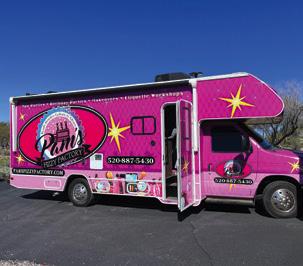









DARRYL POSTELNICK, better known through his social media handles as @ CookingwithDarryl, has gained over three million combined followers through his YouTube, Tik Tok, and Instagram accounts.
The dad of three, whose twins attend ASU, started making videos in October of 2020 after his youngest daughter encouraged him to share his love for cooking on the Internet.
In just a few months, he saw his accounts growing rapidly, reaching 1 million followers and continuing to expand.
After managing the platforms with the help of his daughter, and then eventually on his own, Darryl now has two interns who assist him.
In his videos Darryl shares recipe tutorials and makes everything from salads, to seafood, mac and cheese, short ribs, lamb chops, pizza, burgers, and more!
He also demonstrates some of his favorite gadgets including a kitchen scale,
griddles and grills, and gravity salt and pepper grinders.
Outside of cooking, Darryl is an experienced sales professional, having spent 15 years at Microsoft launching the first Xbox platform, working for Buena Vista Home Entertainment – a division of The Walt Disney Company –, and Yahoo! He currently serves as the Senior Vice President in Sales for Opia.
But it’s the love of cooking for family and friends that Darryl says he enjoys the most.
His advice for dads who might be hesitant to cook: “Relax, have fun! It’s not as hard as you think!”
Darryl and his wife, Karen, reside in Chicago, but have owned a home in Scottsdale for the past 20 years where they visit often, and said they plan to retire there in one to two years.
Check out some of Darryl’s favorite recipes:
Ingredients
• Package of pancetta
• White onion
• Can of tomato paste
• 2 cups heavy cream
• 2 28oz. cans crushed tomatoes
• Half stick of butter
• 1/2 cup parmesan cheese
• Scoop of pasta sauce
• Olive oil
• Handful of garlic
• Oregano
• Red pepper
• 1 cup vodka
• Salt and pepper
• Basil
Instructions
1. In large pot, heated over medium/ high heat, add in olive and package of pancetta
2. Chop up onion and handful of garlic
3. Add onions and garlic to mix; Cook until translucent
4. Stir in can of tomato paste with a few sprinkles of both oregano and red pepper
5. Pour in heavy cream and stir until well incorporated
6. Add in 2 cans of crushed tomatoes and vodka; Mix well
7. Let sauce cook for about 30 minutes over medium heat to let vodka burn off
8. Add in salt and pepper with the half stick of butter
9. Stir in parmesan cheese with basil
10. Add scoop of pasta water and give it a final mix
11. Serve over any pasta you choose and enjoy!
Ingredients
• 2 jalapenos
• 1 cup white cheddar cheese shredded
• 1 cup gruyere cheese shredded
• Box of cellentani noodles
• 6 tbsp butter
• 1/3 cup flour
• 11/2 cup half-and-half
• 11/2 cup heavy cream
Instructions
1. Preheat oven to 375 0
2. Chop up two jalapenos
3. Place the bacon on a foiled lined cookie sheet
4. Put the bacon in the oven at 3750 and cook for 20-30 minutes or until crispy
5. Remove and let rest before chopping into pieces
6. In a large dutch oven over medium/ high heat, add 6 tbsp butter
7. Whisk in flour
8. Add the jalapenos and let saute until softened
9. Slowly add in half-and-half and heavy cream while continuously whisking
10. Shred a plateful of the gruyere and white cheddar cheeses
11. Cook cellentani noodles according to the directions on the box to al dente
Ingredients
• 2 lbs. of ground chuck
• Salt and pepper
• Frozen stick of butter
• Morton’s Seasoned Salt
Instructions
1. Heat griddle over medium/high heat
2. In large bowl, add in ground chuck along with shredded stick of butter
3. Mix until well combined
4. Roll beef into golf ball sized balls
5. Chop up white onion
6. On griddle, cook bacon until crispy
7. Remove bacon once cooked and place onions in bacon grease
8. Cook onions until caramelized and then remove
• 1 tsp garlic powder
• 1/2 tsp onion powder
• 1/2 tsp mustard powder
• Salt and pepper
• 1 Cup parmesan cheese
• 1 Cup Panko breadcrumbs
• 2 tbsp melted butter
• Small hunk Velveeta cheese
• 1lb bacon
12. Add in the garlic powder, mustard powder, and onion powder and whisk well
13. Season with salt and pepper
14. Add in the cheese; fold the cheese in
15. Add the Velveeta cheese cut into 4 smaller chunks
16. Add in parmesan cheese
17. Continue to cook and mix until everything is nice and creamy
18. Add in the al dente pasta and coat the noodles
19. Mix in the chopped bacon
20. Mix together the melted butter, salt, and panko then spread on top of the mac
21. Lower the oven and bake at 375 0 oven for 25 minutes
22. Remove and let cool and enjoy!


• White onion
• Package of favorite sliced cheese
• 5 pieces of bacon
• Pickle slices
• Buns of your choice
9. Add burger balls to hot griddle and press down with burger press until flat
10. Season with salt, pepper, Morton’s Seasoned Salt
11. Flip burgers once crust is formed and add onions on top
12. Layer tops with cheese and cover until cheese is melted
13. In burger/bacon grease, toast the buns
14. Plate bottom bun with 2 pickles, piece of bacon and burger on top
15. Add any condiments and enjoy!



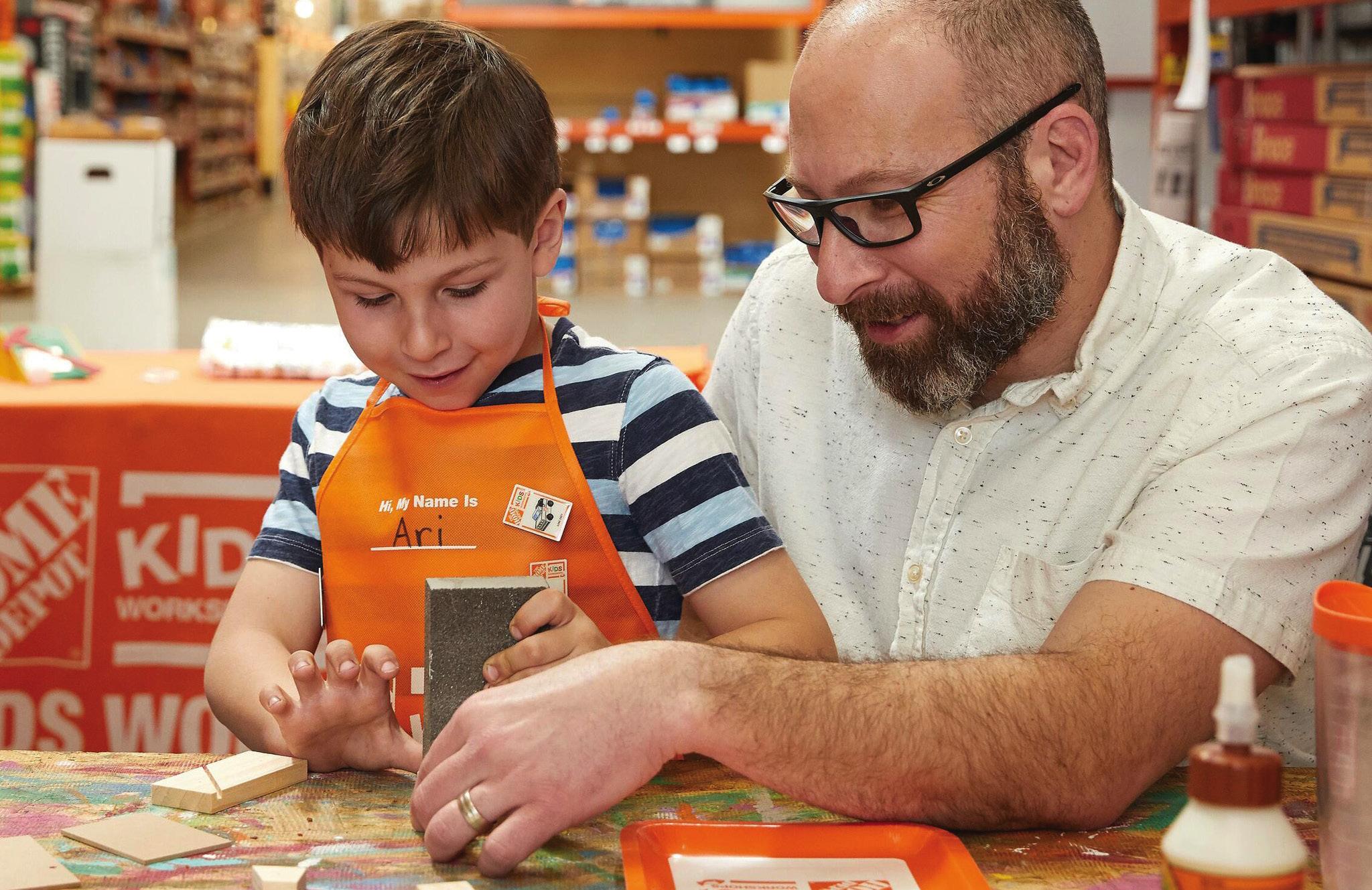
WHETHER YOU’RE a stay-at-home dad
looking for some fun things to do with your kids, are solo-parenting for the weekend, or just want ways to spend some one-on-one bonding time, here are a few ideas that will keep you and your kids entertained, and won’t cost you much either!
Attend story time at your local library
Many of the libraries host free story times for young kids. Check your local library listing for dates. Some may also require you to preregister.
Go fishing at a nearby lake
Spend some time in the great outdoors soaking in the sun and trying to catch some fish. Kids under of the age of 10 can fish without a license!
Pick out a Culture Pass activity from Act 1
Find a variety of free passes granting entry
to museums, zoos, state parks, and more. Available at over 150 libraries across the state!
Walk around Scheels
Check out the huge sporting goods store in Chandler and take part in one of the many family-friendly activities inside the store including: Riding on the 65-foot Ferris wheel for just $1, playing some arcade games or miniature bowling, or letting little ones burn off some energy in the small jungle gym area.
See the fish displays at Cabelas or Bass Pro Shops
Like going to a mini aquarium, Cabelas and Bass Pro Shop locations feature an up-close fish tank authentically themed to match the local environment and stocked with fish native to area waters. At Bass Pro Shops kids can even help feed the trout every day at 1:30 p.m.
Attend a workshop at Home Depot or Lowes
Kids can attend free hands-on building workshops with new projects every month at both Lowes and Home Depot.
Watch the planes take off and land
Visit the Pima Air & Space Museum’s restaurant, Flight Grill, where you can enjoy the mountain views, outdoor patio, and watch as aircrafts take-off and land across the street at Davis-Monthan Air Force Base. Kids 12 and under can get a kids’ meal for just $5, or grab a slice of pizza for just $3!
Get samples and walk around Costco
Taste your way through Costco as you browse the aisles and grab free samples to munch on. For best chances of samples, go between the hours of 11 a.m. and 4 p.m.
Go on a train ride
Have a little one who loves trains? Visit the Old Tucson Studios, Southern Arizona Transportation Museum, or Trail Dust Town for some unique train experiences. Check out our train roundup for a full list of train attractions!

PARENT AID is a Tucson-based organization providing community, education, and support for parents. Their unique “Love Like a Dad” program offers a variety of classes specifically designed for men, dads, and father-figures. Many of the classes and workshops are offered virtually, so any dad from anywhere can join!
Here is a breakdown of the different types of support Parent Aid offers for dads:
Boot Camp for New Dads: The birth of your first baby can be an overwhelming and scary experience. Your first drive home as a new family is one of the most stressful experiences of a dad’s life. Boot Camp for New Dads will help equip expectant dads with the tools and knowledge needed to be successful right from the start.
DAD TALK: Humor
Dad Classes & Workshops: Choose from three different programs from the National Fatherhood Initiative: 24/7 Dad AM, 24/7 Dad PM, and 24/7 Dad Key Behaviors Workshops. Each program will boost your skills in dadhood, so you can take all three to help you become the best dad that you want to be. Classes offered virtually and in-person on Tuesday and Wednesday evenings.
Dad Groups: Sometimes, all we need is to catch up with another dad. The brotherhood of dadhood is an elite group that needs your membership. Every dad has something to offer and something to gain from the group. This is an open call for men to share their strengths, hopes, experiences, and challenges as fathers, dads and co-parents. Offered virtually through Zoom! The group is free and does
not require registration.
Love Like a Dad Blog: Gain some insight and wisdom through thought-provoking questions from the dad guys and gals at Parent Aid. Find out more about Fathering Skills, Back to School for Dads, Bonding & Getting Involved, Self-Care for Dads, and more!
Fathering in 15 on Demand: Fifteen on-demand topics, each just 15 minutes long to help you become the best dad you can be. Topics include: Family History, Being a Man and Dad, Handling, Emotions, Grief and Loss, Your Health, You and Mom, Talking with Mom, Co-Parenting, Fathering Skills, Child Development, Child Discipline, Sexuality, Intimacy, Work-Family Balance, and Managing Money. Offered in both English and Spanish.
Dad-Share: This six week parenting class is designed just for dads and men-in-families. Whether you are bio, step, grand, honorary, future, whatever – this opportunity is for you! Topics discussed throughout the program include: Co-Parenting and Working with Mom, Setting the Foundation for Positive Discipline, Understanding and Handling Feelings and Emotions, Masculinity and Fatherhood. The Class is offered as a hybrid in-person at Parent Aid and virtually through Zoom. The next class begins April 24th!
For more information on the different Parent Aid programs, or to register for a class visit parentaid.org
DAD JOKE: An unoriginal or predictable joke, especially a pun, of a type supposedly told by fathers.
How do you know when your clock is still hungry? It goes back four seconds.
Why do dads take an extra pair of socks when they play golf? In case they get a hole in one.
Why can’t a leopard hide? Because he’s always spotted.
What is the Easter bunny’s favorite type of music? Hip-hop.
Why did Beethoven get rid of his chickens? All they said was, “Bach, Bach, Bach, Bach…”


I REMEMBER WAKING up at 4 a.m. with a feeling of excitement. This is the day I had been waiting for for a year. My brothers and I had slept in our clothes and packed the red eight-seater Chevy suburban with my dad the night before so everything was ready. We picked up my best friend and his dad on the drive. My dad was taking us to a week of hiking, camping and trout fishing in Yosemite National Park and I could not have been more excited.
As a Psychiatric Physician Assistant at Denova Collaborative Health, I treat Arizona dads over telehealth who are experiencing a range of psychiatric issues from insomnia to PTSD, anxiety, and depression. The fathers I treat have one thing in common: They love their kids and they want to be the best fathers they can be. This desire is often the driver behind them seeking to improve their mental health.
Here are a few tips to making a great connection with your kids and setting them up for success in a changing world:
Many fathers struggle to strike a balance between earning a living and being present at home. The pressure to provide can overshadow
the equally important role of bonding with their children. It was a struggle that my dad faced every day working a demanding job with a long commute. Growing up in a large family, I was blessed with an exceptional dad. He read to us in the evenings, coached my brothers and I on our respective soccer teams, and spent a couple weeks every year in Yosemite National Park camping with the family as well as boys-only backpacking.
Tip: Include your kids in the things you enjoy. My dad found ways to include us in the things he enjoyed. He loved soccer, so he put us on soccer teams and coached them. He loved literature so he read us the great works of fiction and non-fiction in the evenings. Whether it’s sports, off roading, or music, find things that you can share with your kids from an early age.
A common misconception is that dads must always be "strong," which can lead fathers to not say the most important things that kids need to hear. It’s important to tell your kids, “I love you”, “I’m proud of you”, “You are really good at this”, “forgive me”. Our kids are learning

from us all the time. The patterns of communication and expression that we use will become our children’s toolset later in their lives.
Tip: It's okay to show emotion. Sharing your feelings with your children teaches them emotional intelligence and strengthens your relationship with them. Set aside time after your kids go to bed to communicate with your spouse. Loving, forgiving, and appreciating your spouse is key to teaching your children how to have good relationships.
I always appreciated how my dad included us in his decision making. When it was time to find a new religious faith as a kid he said we would decide that as a family. Ultimately, the faith that we kids chose was not his first choice, but as he got to know it better, he has loved it more than any other. When we discussed family commitments, vacations, or school events, he put us first and included us in those decisions.
Tip: While many decisions should be made by parents (such as limiting technology, and negative influences) including children in decision making can teach them to make good decisions when you are not around.
Today's dads are expected to be more involved in hands-on parenting than past generations. There are many thing dads can do to stay involved. It’s important to respect your children and be proud of them. Show your children you’ll do anything for them. You can play “beauty salon” for your kids helping them with painting their nails, arranging their hair, or doing a foot spa. You can set up a “carnival”, arranging stuffed animals into a zoo, setting up carnival rides and feats of strength competitions for jumping and lifting. When your kids ask to play, try your best to answer yes.
Tip: Educate yourself. There are plenty of resources, from books to local parenting classes, that can help you gain confidence in your parenting skills. Be present with your children, you won’t get the time back. Consider reading parenting books. I recommend:
• Girl Dad by Madeline Anderson, which shares stories from real dads as they learn to relate to their daughters.
• The Intentional Father by Jon Tyson, which teaches you how to set your teenage son up for success by being an exceptional dad.
Fathers play a unique role in their children's lives, and it’s important for family members to support dads in these struggles. Family members can ease the load on dads in a variety of ways:
• Encourage open dialogue. Create a safe space where fathers can express their worries without judgment. My mom always made it a priority to talk to my dad in the evening without interruptions from kids so they could be on the same page. She never talked negatively about our dad.
• Offer help. Sometimes, the best way to support is by offering practical help, like taking care of a meal or managing a carpool shift.
• Acknowledge their efforts. Recognition goes a long way. Celebrate the small victories as well as the big ones. The patients of mine who have exceptional relationships tell me that they have a partner who is grateful for them, loves them, and is calm and gentle with them in the face of stress and arguments.
The world is changing quickly for our kids and we dads need to stay a step ahead. By recognizing and addressing these challenges head-on, dads can not only navigate but thrive in their critical role within the family. Remember, being a great father isn't about being perfect; it's about being present, engaged, and willing to grow alongside your children.
If you're a father who's experiencing significant stress, struggling to balance it all, or you simply need a listening ear, consider contacting your primary care doctor or reach out to Denova Collaborative Health. You can schedule a virtual behavioral health therapy session, and be seen within 24 hours. Learn more at denova.com.
Thomas Silva PA-C is a Board-Certified Physician Assistant whose experience includes managing acute behavioral health units and caring for a wide array of psychiatric emergencies. He is a proud provider within the Denova Collaborative Health network and has helped countless patients improve their social relationships. Thomas’ passion is driven by the bonds he has with his patients and loves to see clients enjoy their marriages, jobs, and social relationships.

AS A DAD who works outside of the house, I often come home feeling like I’ve “missed out” on time with my son. Even though I’m worn out from a full day working as an oncology nurse and caring for other people, I genuinely miss hanging out with my two-year-old son— despite how demanding and exhausting I know he can be.
Since my wife works from home and cares for our son while I’m at work, I know she’s ready for a break and needs to get some work done when I get home.
While it’s taken us almost two years (and a schedule change for me) for us to fall into a good rhythm and parental divide, I think we’ve finally found our groove. Simply put, we trade off. When I get home from work, I take over the parenting duties for the evening—prepping dinner, feeding, playing, bath time, etc. and it’s her turn to go work.
This system has allowed us both the chance to get what we need: I get to spend the evening hours with our son, and she gets a break from parenting while tackling some work projects.
We’ve learned to trade off in other ways too, which can be helpful for you and your spouse to get a break, recharge, change up your roles, and
avoid burnout and resentment. Here are some suggestions on how you can implement some trade off in your parenting roles:
Trade Off Ideas:
Swap routines. Every other night, switch which parent does the bath/bed routines. If one parent has been home with the kids all day, the other parent does bath/bed time. It’s a good way for kids to spend time with both parents, too.
Take turns sleeping in. This could be on weekends or whenever you have a day off together. One parent can sleep in on Saturday, the other on Sunday. Or one parent gets to sleep in both days this weekend while the other parent gets to sleep in both days next weekend.
Split the day: On days you’re home together, try a split shift where one parent takes the morning shift (roughly 6 a.m. to 1 p.m.) and the other takes the afternoon shift (roughly 1 p.m. to 8 p.m.) and you both get some alone time, a chance to run some errands, go to the gym, meet up with a friend, etc.
Take turns making dinner. One night
one of you makes dinner while the other one occupies the kids—takes them to the park, in the backyard, or for a walk. Switch it up the next time.
Change up your normal tasks. I used to be the one to always get the oil changed in our cars. But one day my wife offered to do it, and I stayed home with our son. This gives you a change from your normal responsibilities, and a chance to appreciate what the other person does.
Alternate going out with friends. It’s good to both get a little socialization with friends, and we’ve found it easier to do when our son is asleep for the night since it’s less work on the other person. One parent stays in and keeps an eye on the monitor, while the other goes out for a few hours. Next time, it’s the other person’s turn.
I hope this trade off method brings about some balance and a change of perspective in your parenting roles.
Chris Seleen is an Arizona native, oncology nurse at Banner Gateway MD Anderson Cancer Center, and husband to RAK’s Editor, Monique Seleen. They live in Mesa with their two-year-old son, Carter.


OFTEN, THE THINGS we remember most from our childhood are the things that scared us, excited us, and helped us grow. For me, overnight summer camp checks all those boxes. Every summer between nine and thirteen, I went to overnight camp at the Triangle YMCA Ranch Camp & Retreat Center in the Catalina Mountains of Oracle, Arizona.
This camp has been enchanting the childhoods of Arizona children since 1949. My parents were campers, my siblings and I were campers, and now my children and nieces are campers. In fact, among the many benefits of an overnight camp, my new favorite is the nostalgia I felt as I checked my children into their cabins.
There are many other profound benefits of overnight camps; some are more obvious than others.
Independence: Kids are not only away from their parents but also from electronics. They are away from their bed, bathroom, and comfort zone. It is scary but in all the best ways.
Confidence: Kids learn just how quickly they can make new friends. They transform from solo camper to part of a cabin family in under twenty minutes. Many camps give counselors and campers “camp names.” She may be Jane at home, but at camp, she’s “Nala,” and she’s learning to master her inner lioness.
Adventure: Trying new things can be scary, but at camp, kids are encouraged to try new things, even just once. Some adventures may not be a long-term fit, but some become lifelong hobbies. Some favorites from the Triangle Y Ranch Camp include: Rifle Range, Archery Range, Zip Line, Ropes Course, Horseback Riding, Arts and Crafts, Swimming, Dancing, Hiking, and Camp Fire Songs.
Self-Soothing: If your kids are like mine, they call out to me when they need help. While this is everything my mama heart wants, they also need small doses of learning to comfort and trust themselves. My first memory of self-soothing came at TriY Camp when I was ten. On the third night of camp, I was a little homesick and could not sleep. The counselor encouraged me to repeat, “I am safe; I am loved.” I repeated that to myself, and in a few minutes, I fell asleep. That night
has been a lasting core memory for me and is a skill set I have kept with me for life.
Leadership: Chances are high that there will be at least one event during overnight camp where each camper is a leader, by choice or chance. Sometimes, it is a team-building game, having the leading role at skit night, or walking a friend to the nurse when they have a skinned knee. The leadership experience will help foster growth for your child in their classroom, home, and future jobs.
Job Opportunities: One of the benefits of loving overnight camp is the opportunity to become a counselor. The summer staff experience fosters life-long friendships, adventure, and skills that can make a young person’s first job one of their best memories.
Thirty years after my camper days, I am an active Board Member of the Triangle Y Ranch Camp. While there are many choices for camps, I can personally vouch for the quality of the staff, facilities, board, and counselors.
Tri Y Camp, under the ownership and operation of the YMCA of Southern Arizona, is a local non-profit organization dedicated to providing various scholarship opportunities through an application process.
These opportunities are made possible through continuous community donations, which are accepted throughout the year. If you wish to contribute, enabling a child to attend camp—an opportunity they might not otherwise have—please visit tucsonymca.org/donate for further details or email camp@tucsonymca.org
Melissa Leon is a Tucson native, NAU graduate, and Mesa resident. She co-owns Two Sense Consulting, a bookkeeping and fractional CFO firm dedicated to helping small business owners learn to read and make decisions based on financial statements. She is also the best-selling author and podcast host of "Efficiency Bitch, How Ambitious Women Can Have It All Without Doing It All". Melissa is a mother of three children and intimately knows the transformation from ambitious woman to SuperMom.



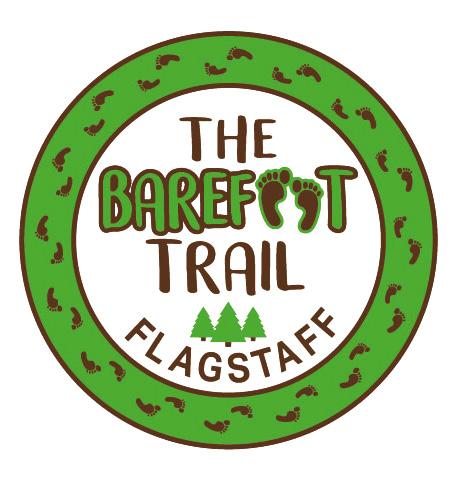


ASU Prep Digital asuprepdigital.org
Grades K-12 can take Reading Refresh or Math Refresh. Grades 6-12 can also take any course in our online course catalog. High school students can earn college credit in concurrent courses. Session 1 starts June 3. Enroll by May 10. Session 2 starts July 8. Enroll by June 14. Tuition is free to full-time ASU Prep students and Arizona private school students registered as part-time ASU Prep Digital students. Public school student tuition may vary; please see asuprepdigital.org/summer-school for details.
Locations in Gilbert, Tempe, Peoria, Glendale, and Tucson, plus a fully Online campus. 480-525-6197 • AAED.ORG
AAED is a fully accredited, private, K-12+ school that specializes in educating students with autism. AAED is staffed with certified teachers and therapists. Small classroom sizes are maintained to maximize individual attention and address the needs of each student. Experts engage students by using a multi-sensory approach to learning and real-world experiences. Here your child will learn academic content along with Music, Art, PE, Life Skills, and Technology. Funding options available! Call us today!
17440 Forest Service 146W Rd, Flagstaff, 86001 • 928-405-6944 • thebarefoottrail.org
All Ages. Outdoor Adventure Park with foot fun for everyone! Enjoy an adventure through the forest on a 1-mile trail while barefoot. Experience manicured sensation paths while grounding to the earth. Explore the adventure stations and use all your senses as you walk through mud, dirt, water, sand, stone and rocks. Opening Summer of 2024. Book your reservation online through our website before your visit!
Gilbert, Chandler, Tucson, Phoenix, Prescott • 480-217-0652 • summercampaz.com
Ages 5-12 (day camps) and Ages &-17 (overnight camps). Day Camps are hosted in Trampoline Parks: Urban Air, Big Air, Altitude, & Defy. Weekly themes like Animal Camps: Horseback riding, petting zoos, baby llama zebra & bunny parties, reptiles; Water Camps: Fire trucks, water slides, foam parties; Cosmic Camps where the lights go low and the music goes up; LEGO, Gaming, and Adventure Camps! Our Overnight Camp in Prescott Arizona National Forest (June 16-22) is a perfect place to unwind from technology and interact with nature. This life-changing mountain retreat experience is packed with activities!
Heber, AZ • 602-336-6575 • campnotawheeze.org
Accepting ages 7-14 years old. Camp Not-A-Wheeze is a unique recreational, educational overnight program helping children with asthma and / or allergic conditions learn effective management skills for their conditions. Camp provides recreational activities such as horseback riding, kayaking, water slides, petting zoo, music, hiking, and more. The activities allow children to exercise control over their disease and learn to lead active lives while learning to successfully manage their chronic illness - all while under the watchful eye of volunteer medical professionals (Physicians, Respiratory Therapists, Nurses, Pharmacists, Paramedics, NP/PA’s). 2024 Camp dates are June 9 thru 15 in Heber, AZ. The cost to attend is $1,050 – scholarships are available to those who qualify. Scholarships are awarded on a first-come, first-served basis, please complete application when registering on website. We look forward to seeing you at camp!
Congregation Anshei Israel
Esther B. Feldman Preschool Summer Camp
5550 E 5th Street, Tucson, 85711 • 520-745-5550 • caiaz.org
Ages 2-5. Each week is themed: Sports/Teamwork, Art/Music, the Great Outdoors, Cooking, America the Beautiful, and a surprise week! In addition, kids enjoy water play, stories, exploration in our STEAM (Science, Technology, Engineering, Arts & Math), music, creative movement, playground time, special visitors and more. Secure facility with a beautiful, park-like shaded playground. Snacks provided. June 3-July 19, 2024. Contact Early Childhood Director at 520 745-5550, ext. 229 or ECDirector@caiaz.org



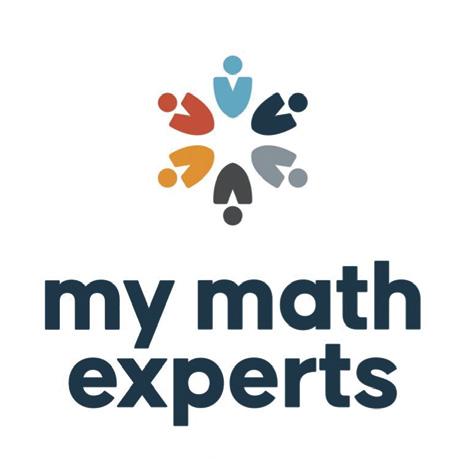


933 E. Friendly Pines Road, Prescott. 928-445-2128 or friendlypines.com
Ages 6-14. Pines Camp is an independent, family-owned sleep-away summer camp that's full of traditional camp experiences. From horseback riding, to hiking, to canoeing, to ropes course, to arts & crafts, to axe throwing, to sewing, to swimming…there’s not much campers CAN’T do at Friendly Pines! Our highly qualified counselors help provide a well-rounded and FUN experience for all, where campers develop life skills that will last them a lifetime.
Camp Whispering Pines, E. Organization Ridge Road, Tucson, AZ 85749 The Hacienda, 3101 N. Sabino Canyon Road, Tucson, AZ 85715 customercare@girlscoutssoaz.org • 520-327-2288 • girlscoutssoaz.org
Ages 5-17. Between the nature talks, archery, tie-dye, songs, and sisterhood, Girl Scout campers are sure to develop newfound skills and come home with wonderful stories. Camp helps kids build resilience and confidence while learning to build a community.
Our trained and caring staff members support Girl Scouts in discovering and embracing who they are and what they can truly become. Our engaging and experiential programs are designed with the camper age in mind, as campers are empowered to choose what activities they are interested in, where passions can be grown, and where healthy and age-appropriate risks can be taken in a supportive and safe environment.
Mighty Minds
4450 S Houghton Rd Houghton, Tucson • 650-464-2858 joinup@mightymindsaz.com • mightymindsaz.com
At Mighty Minds we offer many programs that allow children and families to come together to create mighty minds. Join us for summer camp where campers will learn about mindfulness, mindbody connection and balance, riding, animal care, horsemanship, arts and crafts, and games in a fun and fully inclusive environment! Monday-Thursday 7-11 a.m. $350/camper. ESA accepted. Also offer school break camps $85/3 hours.
5825 N Camino Del Conde, Tucson, AZ 85718 602-687-5852 • mymathexperts.teachworks.com/form/summer-enrollment-form
For Grades 1 through College. Beat the 'Summer Slide' with our Summer Math Programs! Enjoy personalized learning plans crafted through structured assessments, and be guided by an exceptional tutor - always 1:1, always with the same certified math teacher or college professor. Choose flexible packages of 10, 20, or 30 hourly sessions, available to schedule in June and July. Our online calendar offers convenience, with dedicated tutors available Monday to Friday from 8 AM to 7 PM. Secure your spot today for just $75, as summer spots are limited and in high demand! Reserve before April 1st to receive an exclusive 15% discount on summer program fees. Elevate your math skills this summer, with My Math Experts!
1000 E Orme School Rd. Mayer. 928-632-7601 or ormeschool.org/summer-camp
Adventure awaits you this summer at the Orme School! Are you an artist? Do you love horses? Whether your interests are in the arts, horseback riding, swimming, team building, or the outdoors, we have it all! We are offering three camps: Traditional (ages 8-11), Fine Arts (12-16), and Horsemanship (12-16). Orme offers campers a chance to make lifelong friendships and learn new skills. Come join us this summer, we can’t wait to meet you!
3949 W Costco Dr Suite 151, Tucson, AZ 85741 • 520-222-6228 • rocksolidclimbing.com/youthprograms
Ages 6-14. The heat of the Summer can make kids climb your walls. Let them climb ours instead! Participants will also play board games, watch movies, water sports, and create art! There is no limit to the fun! Choose between single days or a full week! June 3-July 22. 9 a.m. to 4 p.m. Extended care available. $79-$339




RSM Online
mathschool.com/locations/online
Summer provides a great opportunity for students to learn and advance without the typical pressures of the academic year. RSM offers a variety of courses through its summer enrichment program - for those students looking to get a head start on the academic year, or for those looking for an additional challenge in math.
Our summer schedule is designed for students of all levels, from Kindergarten to Calculus and SAT preparation. Summer classes are now enrolling at RSM Online!
4860 Mormon Lake Rd. Mormon Lake, 30 miles southeast of Flagstaff • 480-449-0848 • sjycaz.com
Ages 7-17. Campers aged 7-15 enjoy traditional camp activities, including horseback riding, kayaking, hiking, archery, ziplining, campfires & s’mores, astronomy, arts & crafts, and more. Bus transport to/from Phoenix provided. 5 week-long camp sessions available: June 9 – July 6. $800 – $950 per week. Discounts and scholarships are available. Counselor-in-Training (CIT) program that allows teens aged 15-17 to participate in personal development activities and discussions to give them skills in communication, leadership, greater good, positivity, and inclusion. With these skills, they will be ready to be leaders at camp and in their day-to-day lives. If selected, counselors will be asked to return for the camper weeks to put their skills into action (and earn community service hours). CIT Week runs from June 2–8. $225. Scholarships are available. Visit sjycaz.com/citto learn more.
Triangle YMCA Ranch Camp
34434 S. Y Camp Rd., Oracle, AZ 85623
520-884-0987 • tucsonymca.org/triangle-y-camp-retreat-center
Ages 6-17, co-ed. For over 70 years, Triangle Y has been a haven for seekers of adventure and nature enthusiasts alike, offering cherished experiences to visitors from Southern Arizona and beyond! Nestled amidst the stunning Galiuro and Santa Catalina Mountains, Triangle Y is a picturesque spot ideal for corporate retreats or as an overnight camp for your kids. Escape the hustle of city life and immerse yourself in a place that offers a plethora of activities crafted for team building and personal growth. From archery, horseback riding, swimming, and ziplining to engaging Tie-dye and STEAM activities, Triangle Y is a haven for endless days of excitement, culminating in serene evenings under the breathtaking starlit sky! Scholarships available!
Tucson Parks and Recreation: Summer KIDCO
Locations Vary • 520-791-5912 • EZEEreg.com
Programming is available for ages 5-11 years old (must have completed kindergarten) in June and July, Monday-Friday from 7:30 a.m.-6 p.m. (except June 19 and July 4 for holidays). Planned activities may include sports, games, nutrition, fitness, arts and crafts, performing arts, swimming, and special events. Cost: $125/resident, $157/non-resident per month. Registration begins on Saturday, May 4, at 6 a.m. for residents and noon for non-residents at EZEEreg.com
YMCA of Southern Arizona
Multiple locations throughout the Tucson Area. TucsonYMCA.org
Ages 5-12. Join us for eight weeks packed with boundless excitement, perfect for kids seeking endless fun! Our themed weeks led by vibrant, skilled teams promise an adventure-filled experience. June 3-July 26. 7 a.m to 6 p.m.


AS YOU START planning your summer getaways, look no further than Loews Ventana Canyon Resort in Tucson which offers something the whole family will enjoy.
This four diamond luxurious resort sits on 100 acres in the Sonoran Desert with stunning mountain views, quick access to Ventana Trail and Sabino Canyon for hiking to the 80-foot natural waterfall, a 36 hole golf course, upscale dining options, and the serene Lakeside Spa.
While this might sound like a great place to escape for a romantic getaway, the recently expanded Loews Loves Families program makes this a destination that your kids will love, too!
You’ll discover kid-friendly dining options, educational programming, and partnerships with Little Spoon and Hello Bello.
I have vivid memories of staying at local resorts with my family growing up, so I was excited to take my son on his first ever resort staycation. Here are some tips and recommendations to help you plan your family’s stay at Loews Ventana Canyon:



• Suites for families: If you’re going with young kids (or multiple kids), I highly recommend booking one of the Canyon Suites which has plenty of space and a separate living area. This was especially great when our son would take a nap or go down for the night, we could freely watch a show, sit on the balcony, and just hang out and not disturb him while he slept in the bedroom.
• Pack-n-Plays available: Traveling with a baby or toddler? You can request a pack-n-play or portable crib. We had one all set up in our room upon arrival, making it so convenient not to have to bring one with us.
Additionally, because of Loews' partnership with Hello Bello, we also got a baby amenity kit which included trial-sized baby shampoo and body wash, conditioner, baby lotion, wipes, and an eco-friendly travel case, all complimentary of the resort.
While the bustling Tucson area is just a short drive away offering plenty of fun things to do, Loews Ventana Canyon Resort has its own discovery opportunities to do right on the resort property including:
• Stargazing: Three-times-a-week, families can explore the boundless stars and constellations in the night sky through the resort's observation programs led by the Mt. Lemmon SkyCenter team. Tucson ranks among the world's top cities for a stellar stargazing adventure the entire family can enjoy.
• Flora & Fauna Discovery: Explore nature and the indigenous flora and fauna along the resort’s scenic Window Walk nature trail. While on a leisurely stroll, you can enjoy peaceful sounds and picturesque Sonoran Desert landscapes. Informative signs along the path provide insights about the local plants and wildlife that call Tucson home.
• Resort Amenities: There are also a variety of resort amenities that kids will enjoy including yard games, two heated pools and Jacuzzi, and four lighted tennis courts.
• Blues, Brews, & BBQ Brunch: Plan your stay over a weekend because you don’t want to miss the award-winning Blues, Brews & BBQ Brunch happening every Sunday from 11 a.m. to 2 p.m. This was an over-the-top experience, in the best way! With so many different food stations, from charcuterie boards, freshly made omelettes, salads, grilled veggies, and all the traditional BBQ cuisine, there was really something to satisfy any craving. Plus, the live music out on the patio added to the lively atmosphere. It’s definitely a must-do!
• Flying V Bar & Grill: Right on the resort property you’ll find Flying V Bar & Grill restaurant which features a stunning backdrop that overlooks the scenic Santa Catalina Mountains. The menu includes an array of Southwestern inspired dishes and flavors. I’d highly recommend trying the Flying V cornbread & mesquite fry bread which comes with guajillo lime whipped butter and Arizona honeycomb. It was delicious!
While my son is too little to remember how great of a stay we had, my husband and I will cherish the memories we made, and the chance we got to slow down and enjoy resort life for a weekend.
For more information or to book your stay, visit loewshotels.com/ ventana-canyon

KIDS LOVE TRAINS! And let’s face it — plenty of adults do, too.
In honor of National Train Day on May 13th—which marks both the day in 1869 when railroads first connected America from coast-tocoast, and Amtrak’s birthday in 1971—we’ve pulled together a list of places in Arizona with immersive train rides for the whole family and even a cocktail-themed train experience for adults!
Grand Canyon Railway
233 N. Grand Canyon Blvd., Williams 800-THE-TRAIN (843-8724) • thetrain.com
The historic Grand Canyon Railway departs daily from Williams, Arizona to the awe-inspiring Grand Canyon. Enhance your Grand Canyon experience with an entertaining train ride featuring western musicians and cowboy characters on vintage rail cars.
Verde Canyon Railroad
300 N. Broadway, Clarkdale 800-582-7245 • verdecanyonrr.com
Embark on year-round wilderness adventures from the old mining town of Clarkdale (just outside of Sedona). From the moment you step foot on one of the refurbished train cars, you and your family will be transported to a simpler, more leisurely time away from the distractions of our modern world. Relax as you glide along on a 4-hour, 20-mile journey through 110 years of history and enjoy awe-inspiring scenery.
Benson Visitor Center Train Simulator
249 E. 4th St., Benson 520-586-4293 • bensonvisitorcenter.com
The City of Benson Visitor Center is located in the heart of Benson, Arizona. The visitor center is a Train Deport replica of the original Benson Train Depot established in 1880. Embracing the city’s history of being a train town, there is a G-Scale Model Train Simulator that attracts train enthusiasts. Kids (and adults) can try the train simulator for free and earn themselves a nifty souvenir Benson Train Engineer Certificate.
Daisy Mountain Railroad
41703 N. Gavilan Peak Parkway, Anthem 623.551.5880. • daisymountainrailroad.com
The Daisy Mountain Railroad is a 24” gauge railroad located in the community park at Anthem. The 2800 feet of track carefully winds its way past a tiered seating area cut into a sloping hill, past skateboard ramps, softball and soccer fields, through the tunnel, along the catch and release lakes, by the depot, and circles the children’s playground before slowing to a stop at the loading platform.
Desert Breeze Park
660 N. Desert Breeze Blvd. East, Chandler 480-893-6652 • desertbreezerr.com
Climb aboard one of the open-air coaches for a breezy trip around the park. Come along as the glistening 1/3 scale GP-38 locomotive leads the train (complete with a little red caboose) as it winds through a scenic three-quarter mile tour of the park, past grassy play areas and a sparkling lake. The train runs weekends from Labor Day through Memorial Day
Freestone Park
1021 E. Juniper Ave., Gilbert 480-632-2702 • freestonerr.com
Choose from shady covered coaches or breezy open-air coaches, and tour the park in style on Freestone Railroad’s miniature train. The streamline Sante Fe Style Engine pulls excited rail travelers of all ages around the park on a three-quarter-mile ride, past grassy fields and sparkling lakes.The train runs weekends from Labor Day through Memorial Day.
Goldfield Ghost Town
4650 N. Mammoth Mine Rd., Goldfield 480-983-0333 • goldfieldghosttown.com
The Superstition Scenic Narrow Gauge Railroad’s 36-inch gauge train has a Plymouth diesel pulling a passenger car and a caboose along a 20-minute, narrated journey around a mile and a half of track. The engineer tells of the history of Goldfield, the Superstition Mountains, and the desert southwest in general. Departs every 35 minutes.
Heritage Preservation Society
22822 N. 43rd Ave., Phoenix • maricopalivesteamers.com
The Maricopa Live Steamers Railroad Heritage Preservation Society is a club for people who enjoy preserving the heritage of railroading. Every Sunday from October 1 through April 30, they offer free train rides to the public. Donations are appreciated. Bring your friends and family for a leisurely ride along the rails. Open from 11 a.m. to 3 p.m.
McCormick-Stillman Railroad Park
7301 E. Indian Bend Rd., Scottsdale 480-312-2312 • therailroadpark.com
The Arboretum Railroad runs on Saturdays and Sundays through the park’s two acre, desert arboretum. The ride, a 1.5 inches to 1 foot scale train, takes guests on a ten minute loop through the desert arboretum, providing a scenic view and unique train riding experience for people of all ages. Currently the Arboretum Railroad runs the first weekend of the month and takes donations. This ride is open seasonally from October to May.
Old Tucson Studios
201 S. Kinney Rd., Tucson 520-883-0100 • oldtucson.com
Take a trip through cinema history via a miniature railroad at Old Tucson Studios, the filming location of silver screen classics such as “Tombstone,” and “Little House on the Prairie.” Today, the studios are a small theme park through which the train runs. On your ride, you’ll see Hollywood’s version of a historic mission, railroad station, grand hotel, and livery stable.
Platform 18 at Central Grand (adults only)
3626 E. Indian School Rd., Phoenix
602-739-1388 • centurygrandphx.com
This is a special train experience just for parents! Inspired by luxury train trips of the 1920s, Platform 18 is a cocktail lounge designed as a Presidential Pullman train car with windows that display the moving scenery “outside.” Embark on a 90-minute “train ride” with more than 45 cocktails influenced by classic Prohibition-era drinks, and a story chronicling the history of their unseen host, a railroad tycoon and bootlegger. You’re in for a one-of-a-kind experience that you’ve probably never had (especially in a bar!).

Southern Arizona Transportation Museum
414 N. Toole Ave., Tucson 520-623-2223 • tucsonhistoricdepot.org
All aboard! Visit the Southern Arizona Transportation Museum where your tour guide will explain the historic and present day uses of the former Southern Pacific Depot. History comes alive when you explore the restored Depot Lobby, the historic Locomotive #1673, and the Museum. Learn how the railroad impacted Tucson since its arrival in March 1880 all while cargo trains chug along by (it’s still an active depot, serving as a stop for Amtrak passenger trains).
Trail Dust Town
6541 E. Tanque Verde Rd., Tucson 520-296-4551 • traildusttown.com
Visit scenes from the “Old West” on the C.P. Huntington train. Board on the East side of the Chocolate Depot. Rides cost $3 each and may be purchased from Trail Dust Town Trading Co.
Wildlife World Zoo & Aquarium
16501 W. Northern Ave., Litchfield Park 623-935-WILD (9453) • wildlifeworld.com
Take a ride on the wild side! This African Safari Train is a 5/8-mile narrated ride through the simulated plains of Africa with views of endangered antelope, gazelles, ostriches and more.

GET READY TO feel like a kid again when you plan your next date night at Dave & Buster’s.
With an arcade full of games, and a full service menu of delicious food and refreshing drinks, you’ve got everything you need for a fun date night all in one place.
Back in the late 1970s, Buster opened a restaurant known for its tasty food and friendly service. Just a few doors down, Dave opened an outrageous place for entertainment and games where adults were drawn for fun. The two young entrepreneurs noticed people rotating between their establishments, and an idea started to form: What if they put both under one roof?
The two young men headed to “Restaurant Row” in Dallas where they found an empty warehouse and dove into construction. With Dave’s name first because he won a coin toss, they opened the first Dave & Buster’s in December 1982.
Dave & Buster’s now has over 140 locations nationwide—with five of them here in Arizona, including in Glendale, Scottsdale, Queen Creek, Tempe, and Tucson.


A little friendly competition makes for some fun memories as you laugh and show off your skills, or even improve your teamwork as you work together to see how many tickets you can win.
Dave & Buster’s has all the games you could imagine including classic arcade games such as skee-ball, car racing, air hockey, hoop shooting, and even some interactive electronic board games such as Connect 4, Hungry Hungry Hippos, and Monopoly. You’ll also find a few virtual reality games and billiards.
Say goodbye to carrying around stacks of tokens or tickets. Everything is electronically loaded onto your Power Card. Simply tap it on the game you want to play, and tickets are automatically added to your card if you win. It’s super easy and convenient to carry with you.
Once you win big, don’t forget to check out the array of prizes to choose from! You’ll find everything from candy to skincare products, robo vacuums, headphones, t-shirts, and more.
Fuel up before or after you play. Dave & Buster’s has a wide selection of delectable options for lunch or dinner. With everything
from flatbread pizzas, wings, pretzel bites, burgers, salads, steak, nachos, and more— you’ll find something on the menu everyone!
You can even cash in tickets in exchange for select menu items—a win-win!
Enjoy sipping on some classic cocktails such as a strawberry watermelon margarita, a fresh mojitio, craft beer, or a glass of wine.
Dave & Buster’s dining areas also feature several TV screens and are designed so no poles block the view of your favorite team.
Love trivia? Every week of every month, Tuesday nights belong to trivia — and your whole crew can get in on the action! With themed trivia nights on deck and awesome prizes to win, you won’t want to miss out on the fun!
This was definitely one of our most action-packed, fun dates that got us laughing and feeling like teenagers again. I’d highly recommend getting together with another couple and making it a double date like we did. It made for some couple versus couple competitions and girls against guys game plays.
For more information or to find the location nearest you, visit daveandbusters.com









